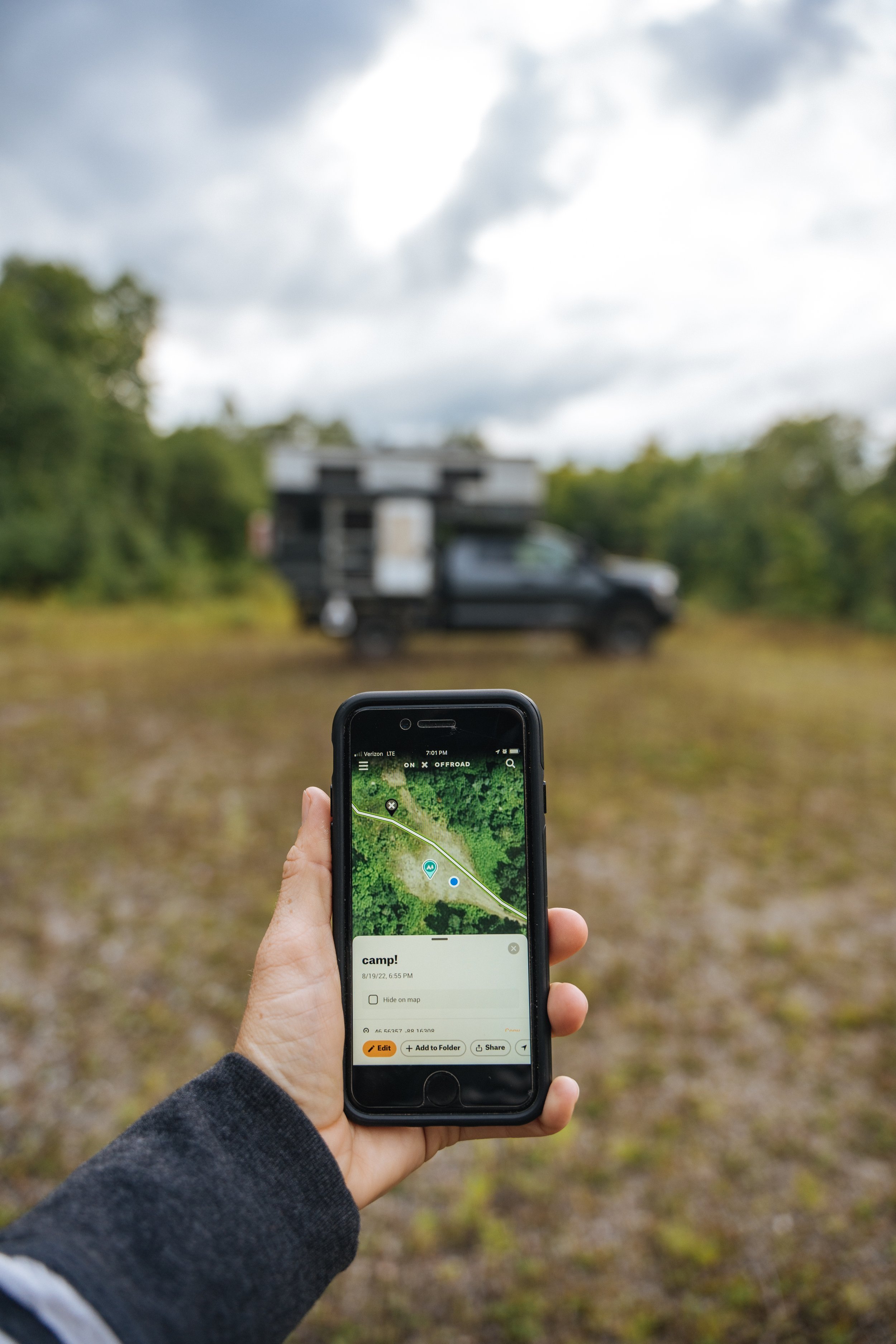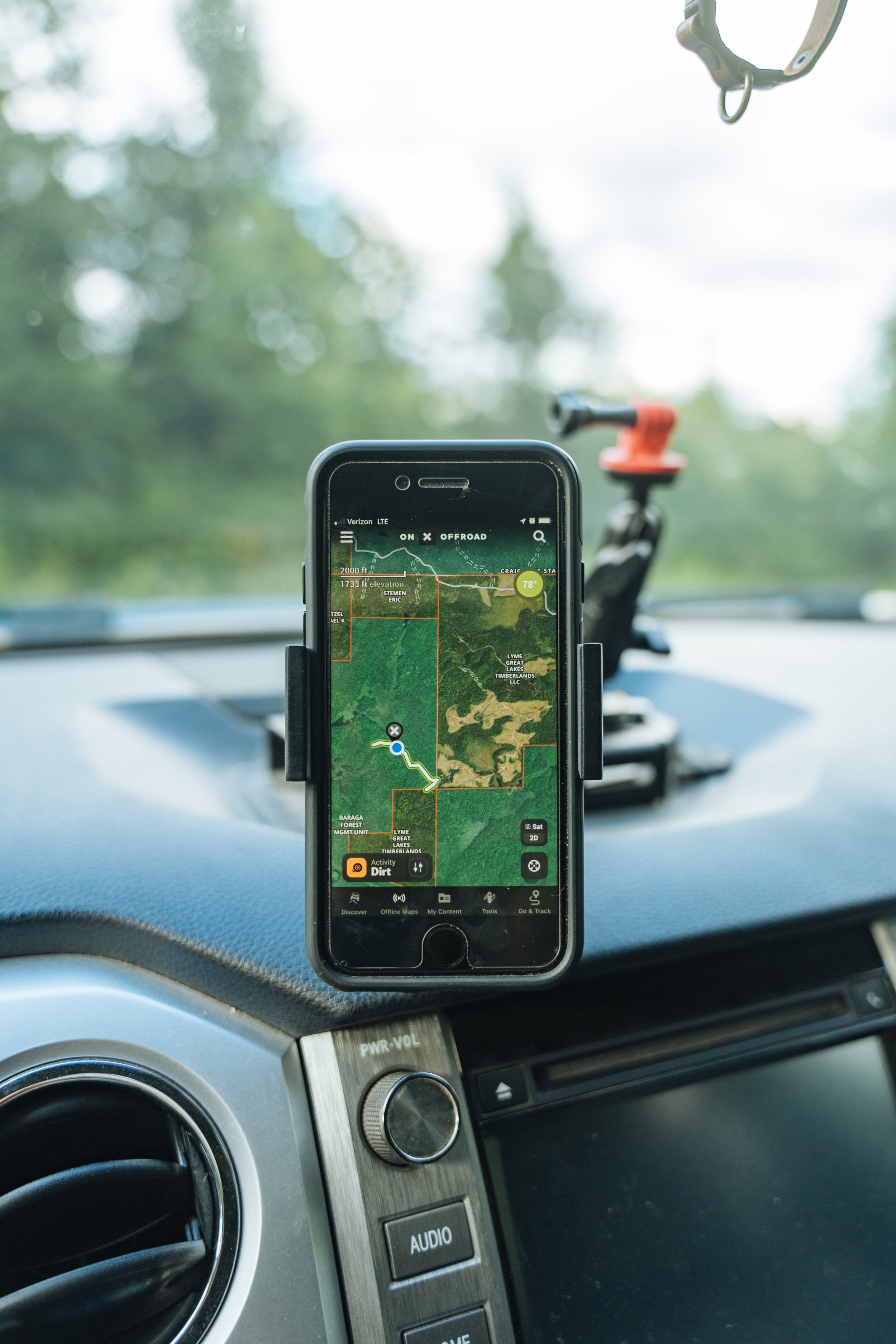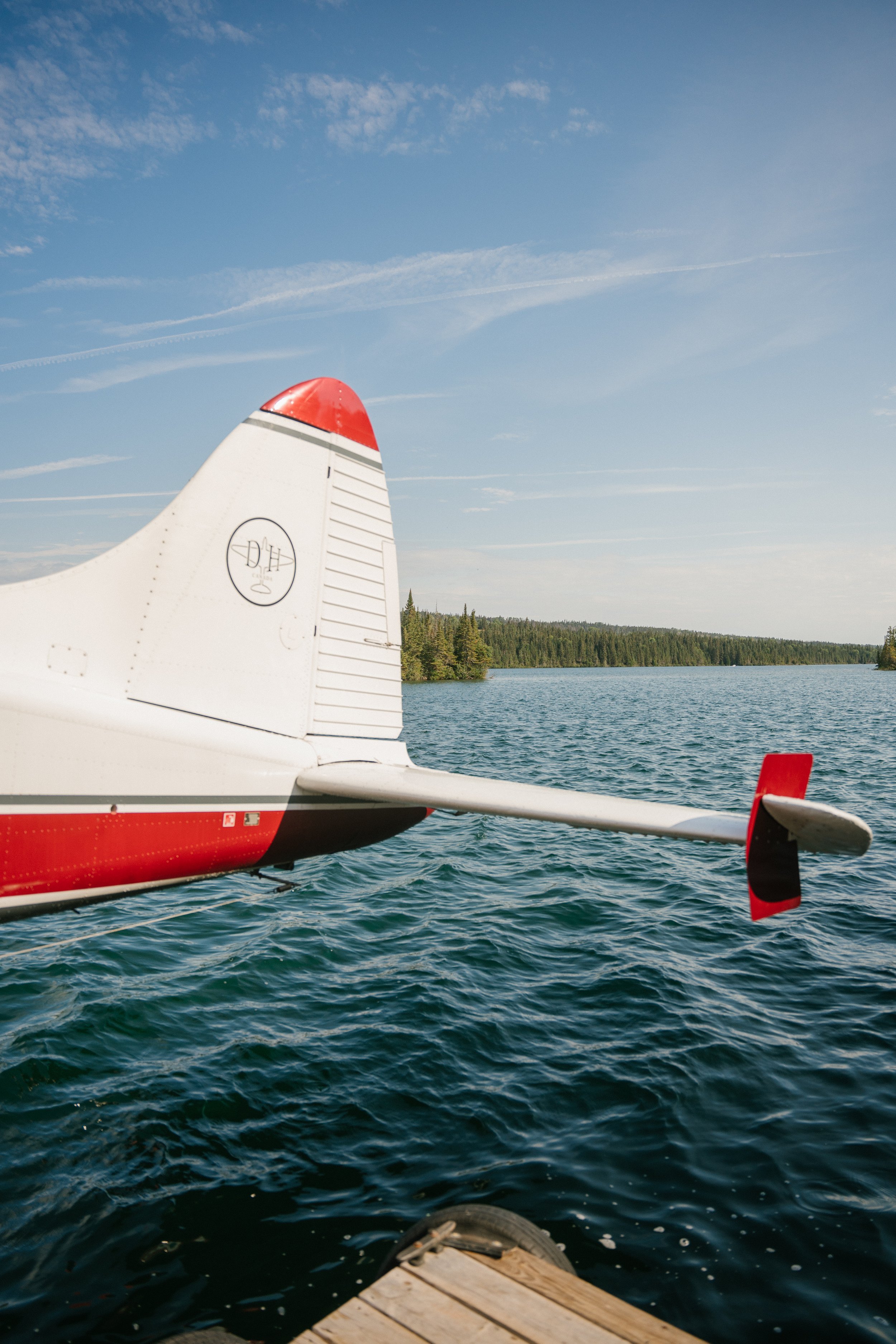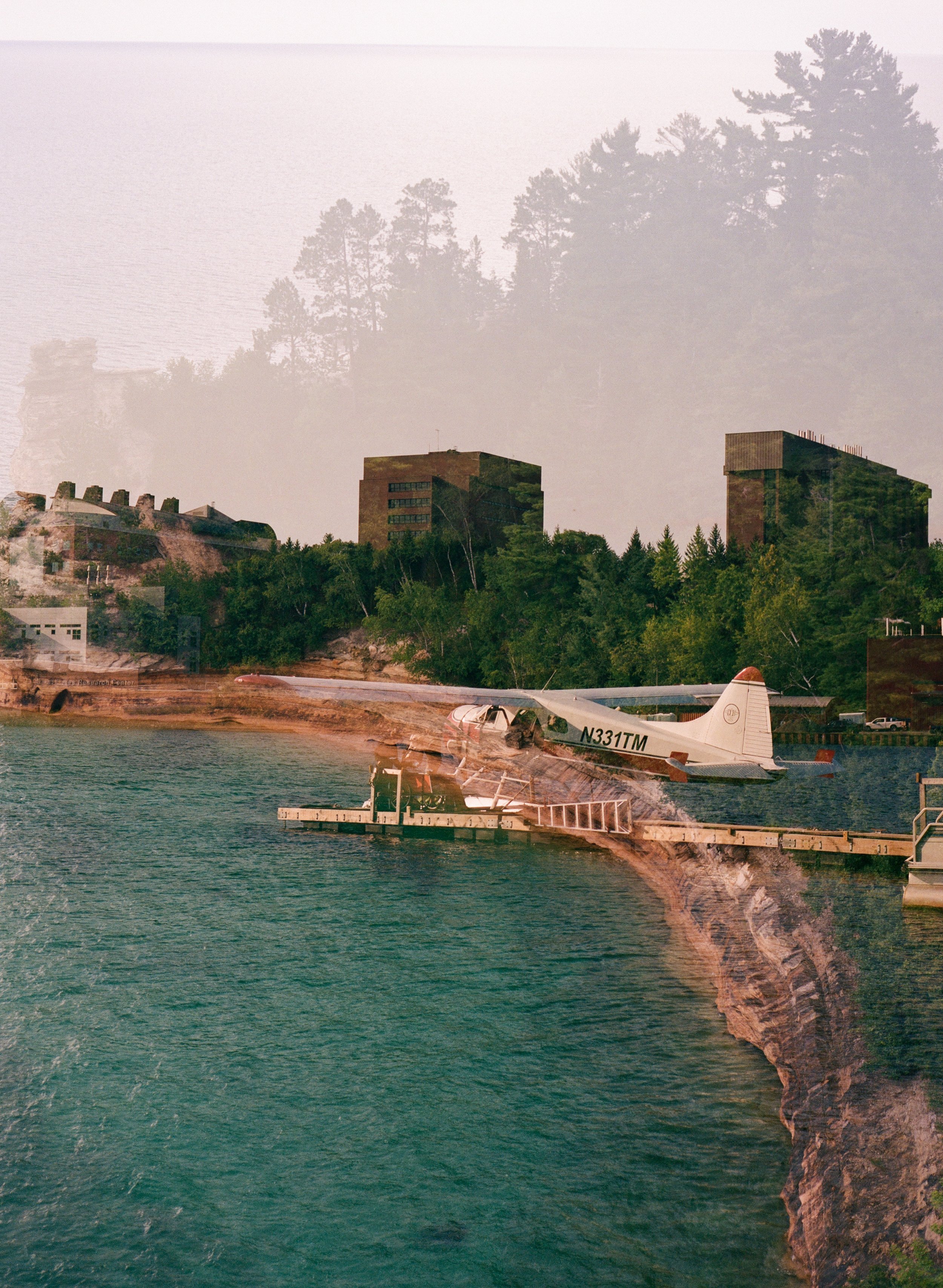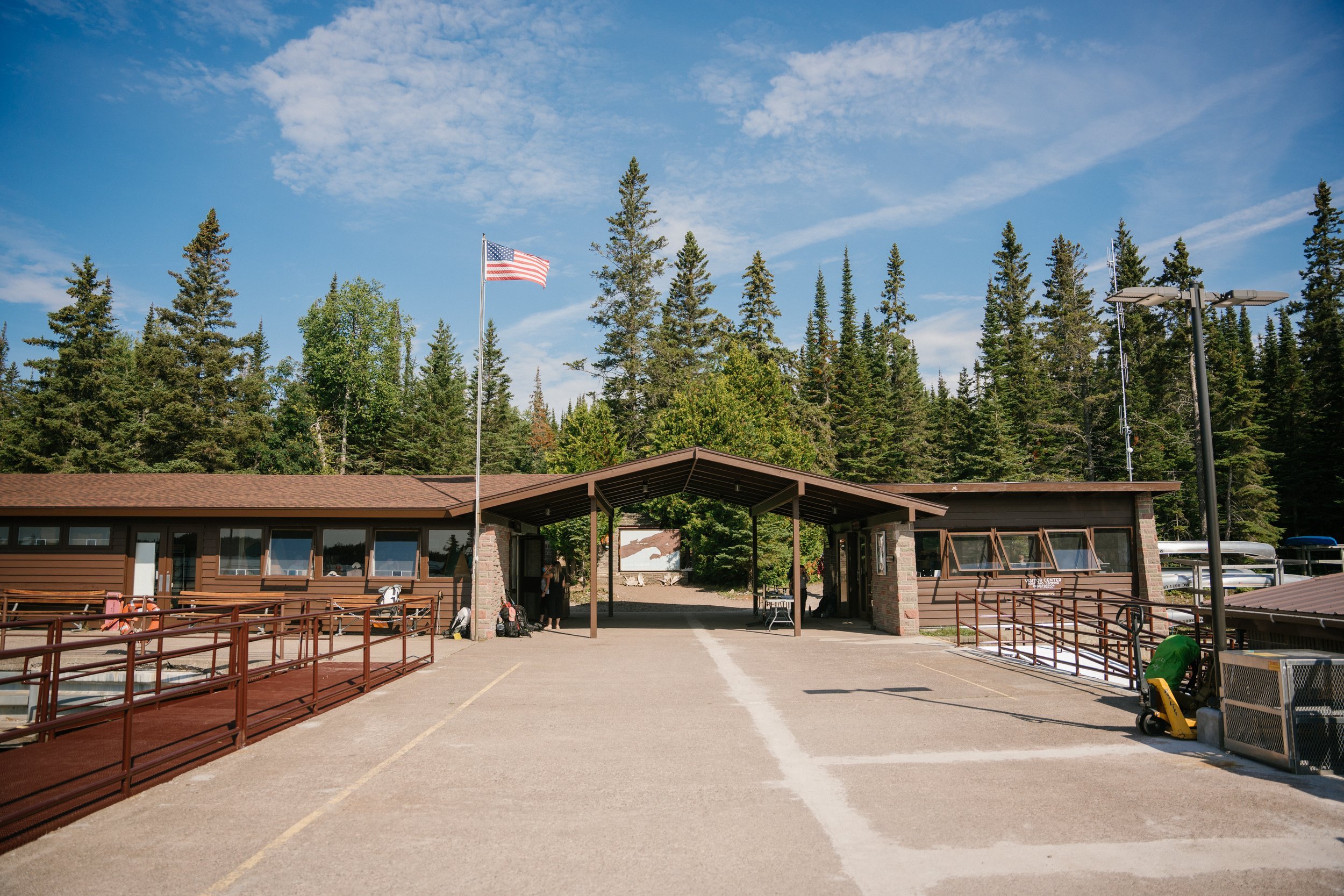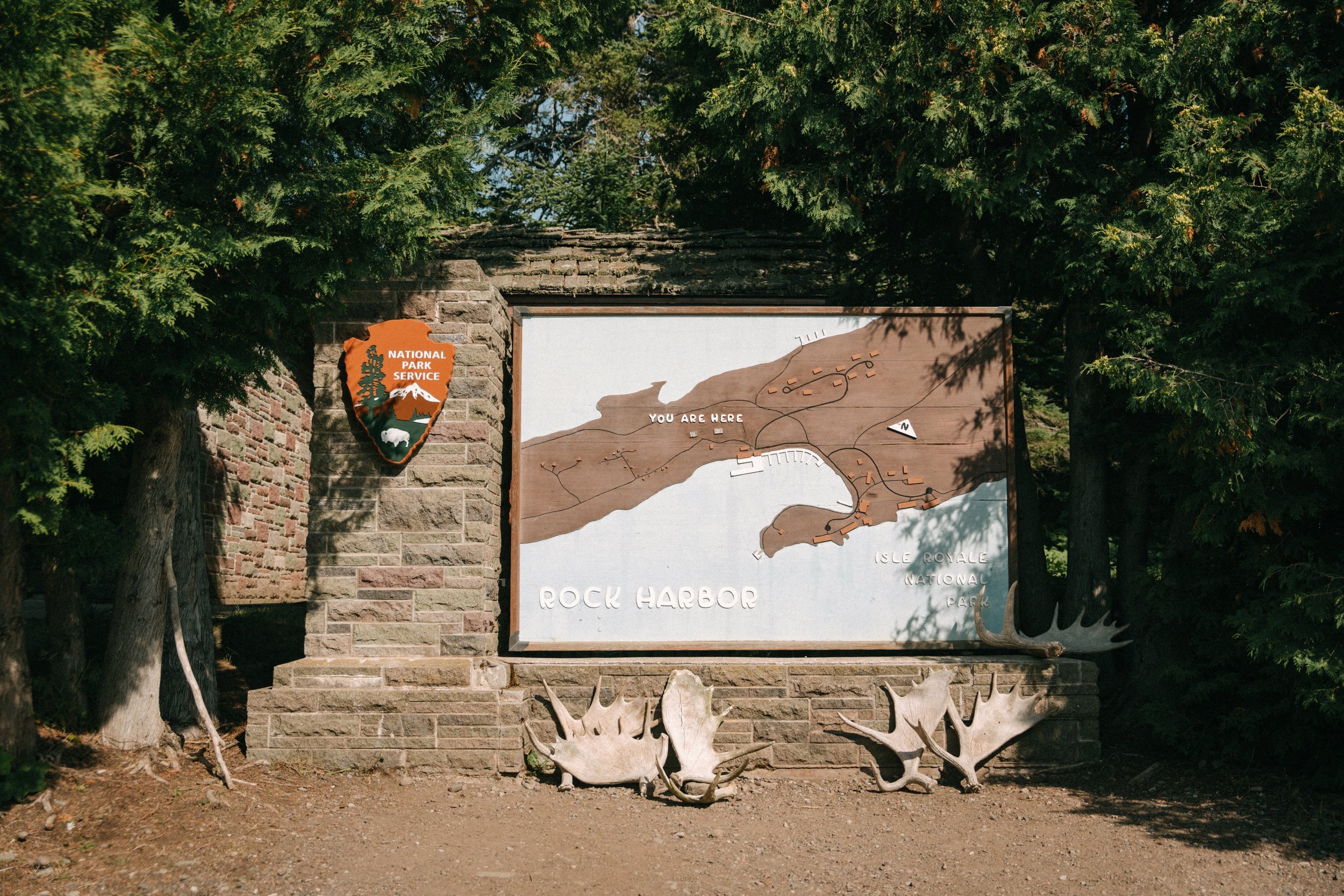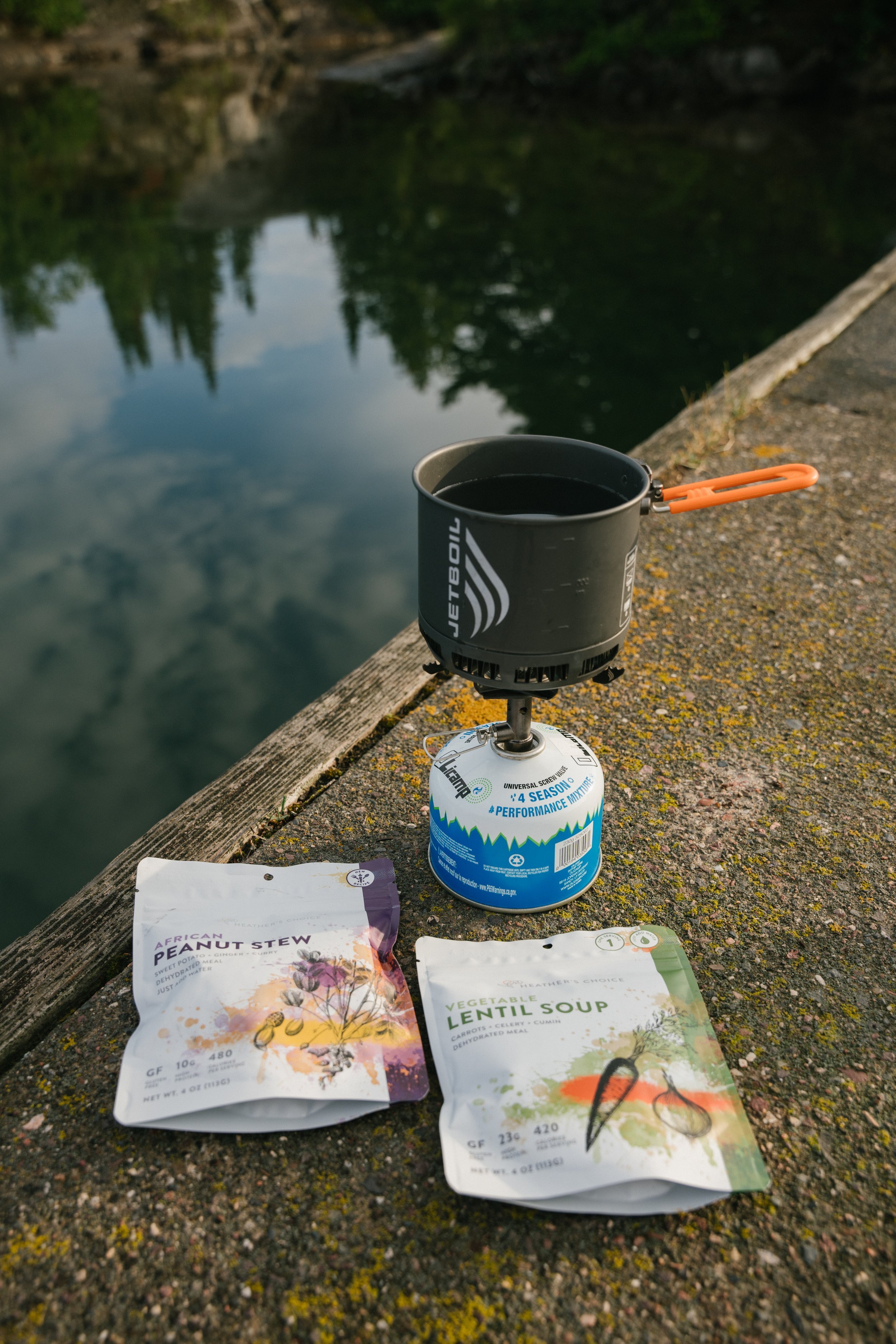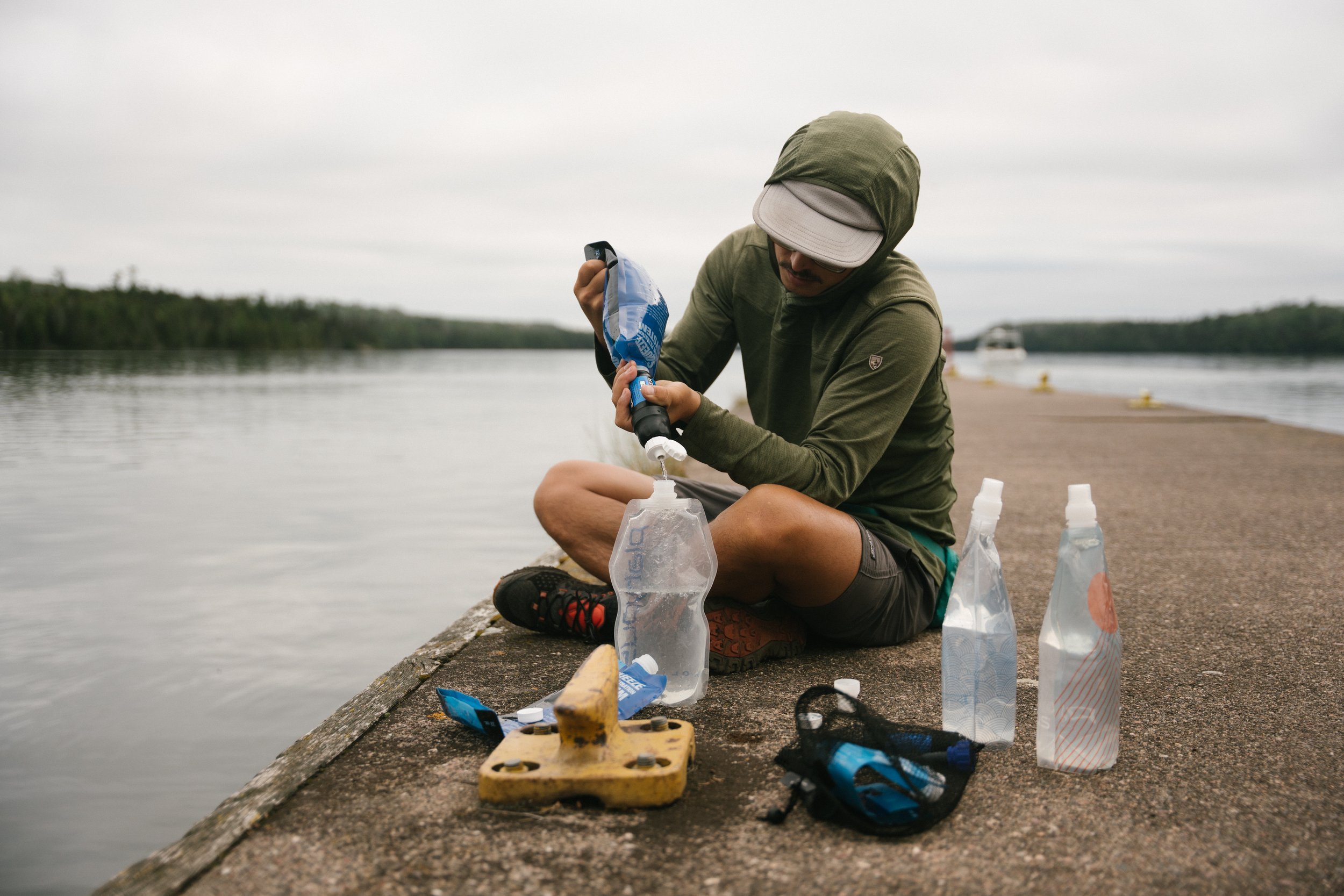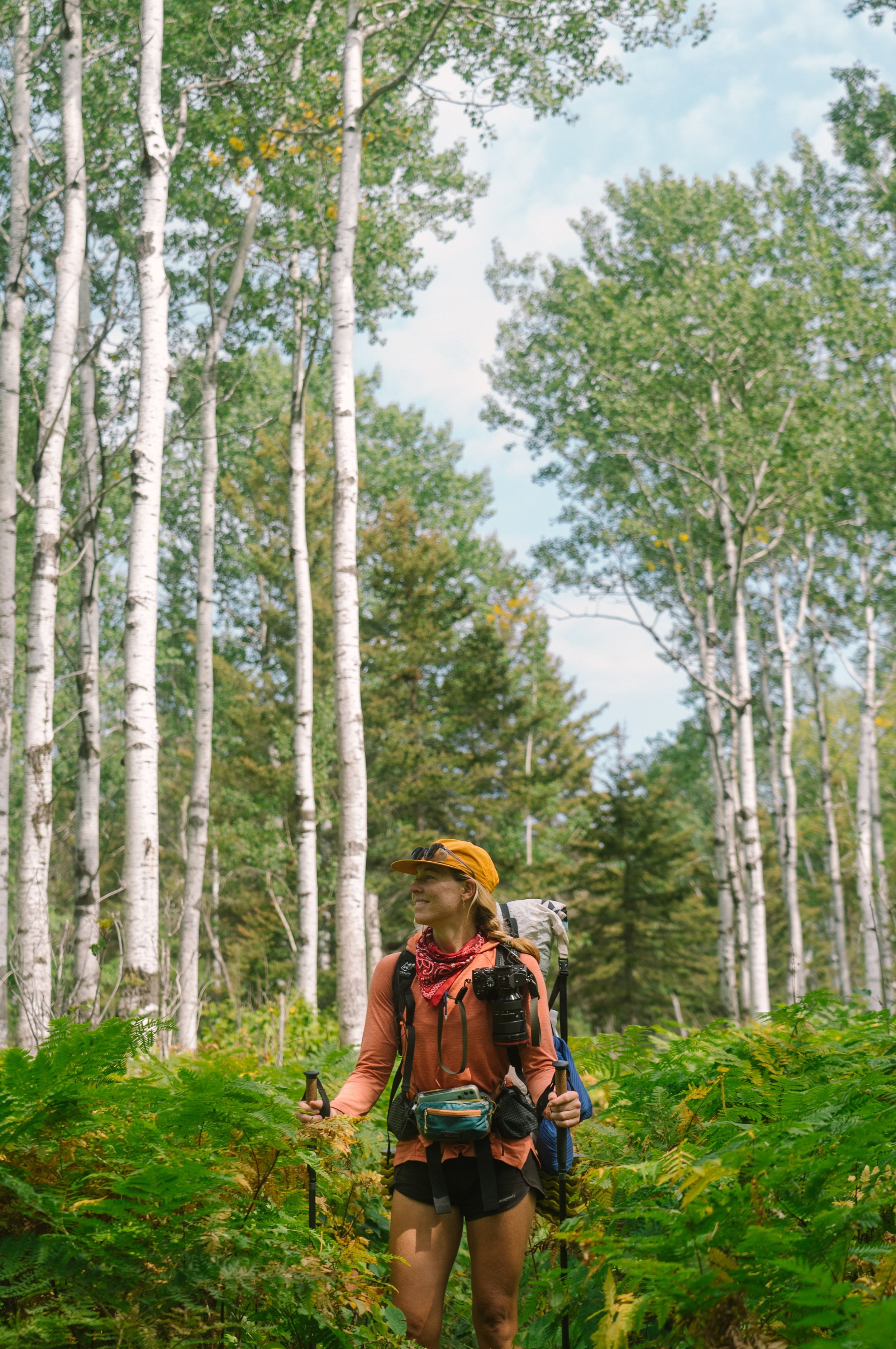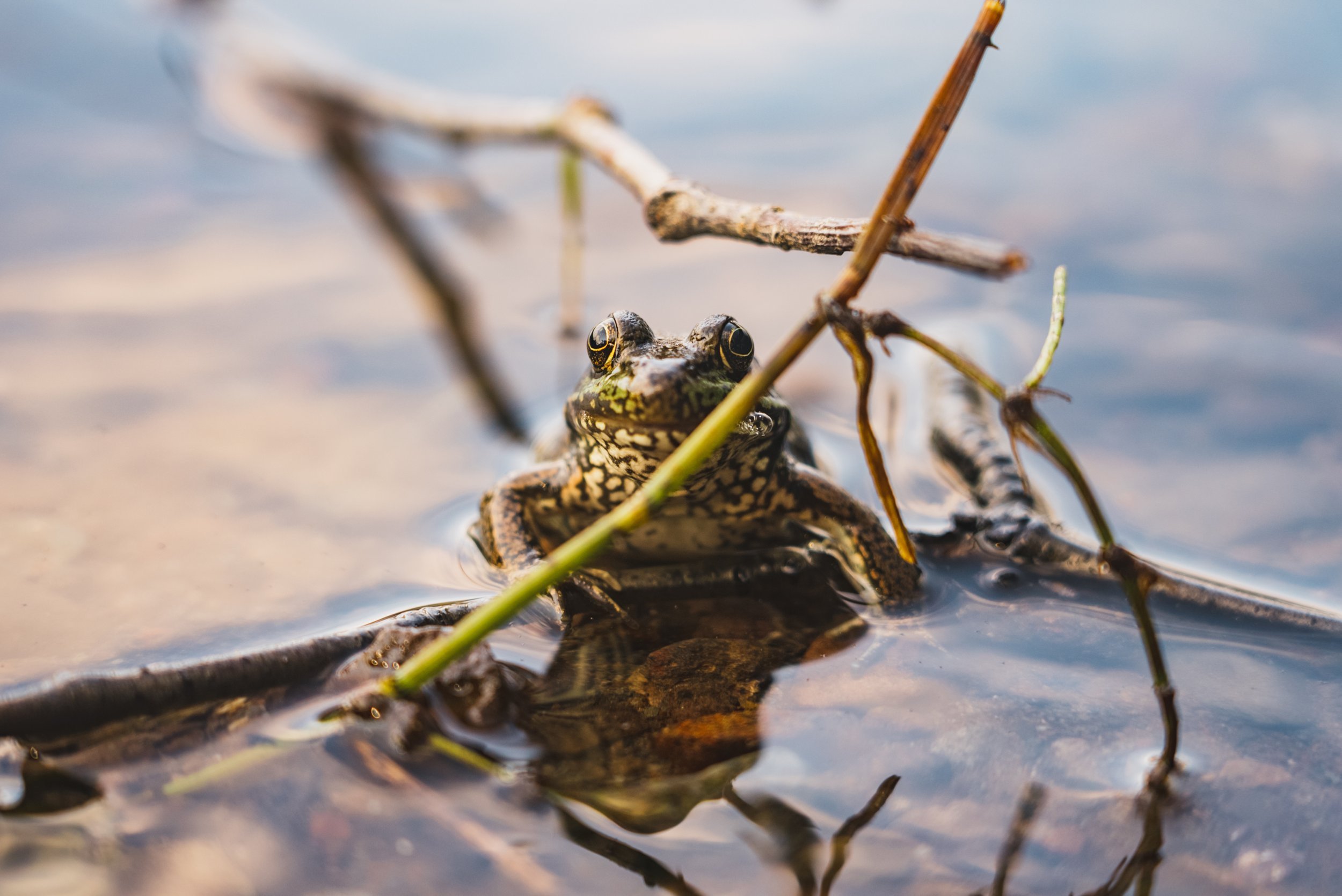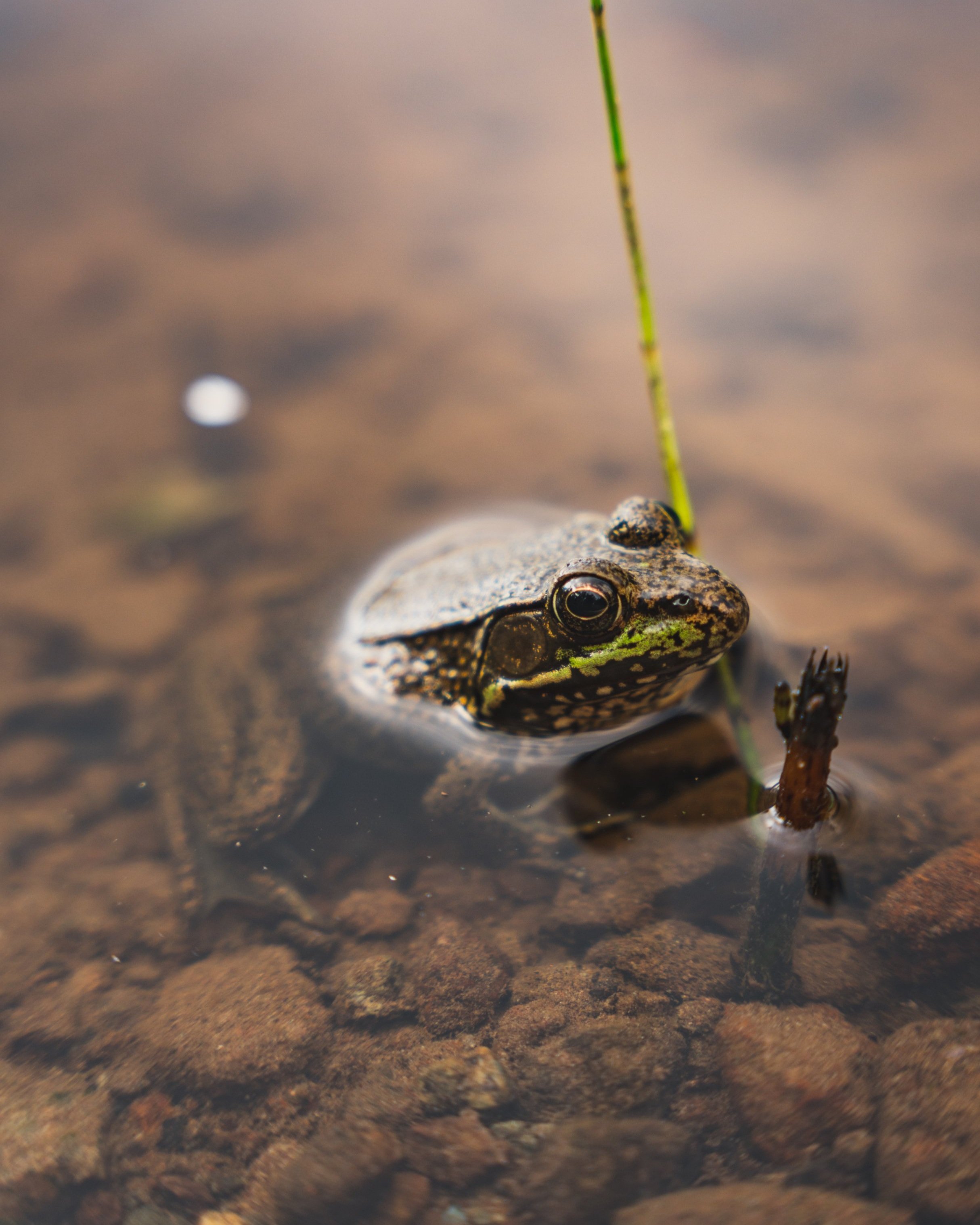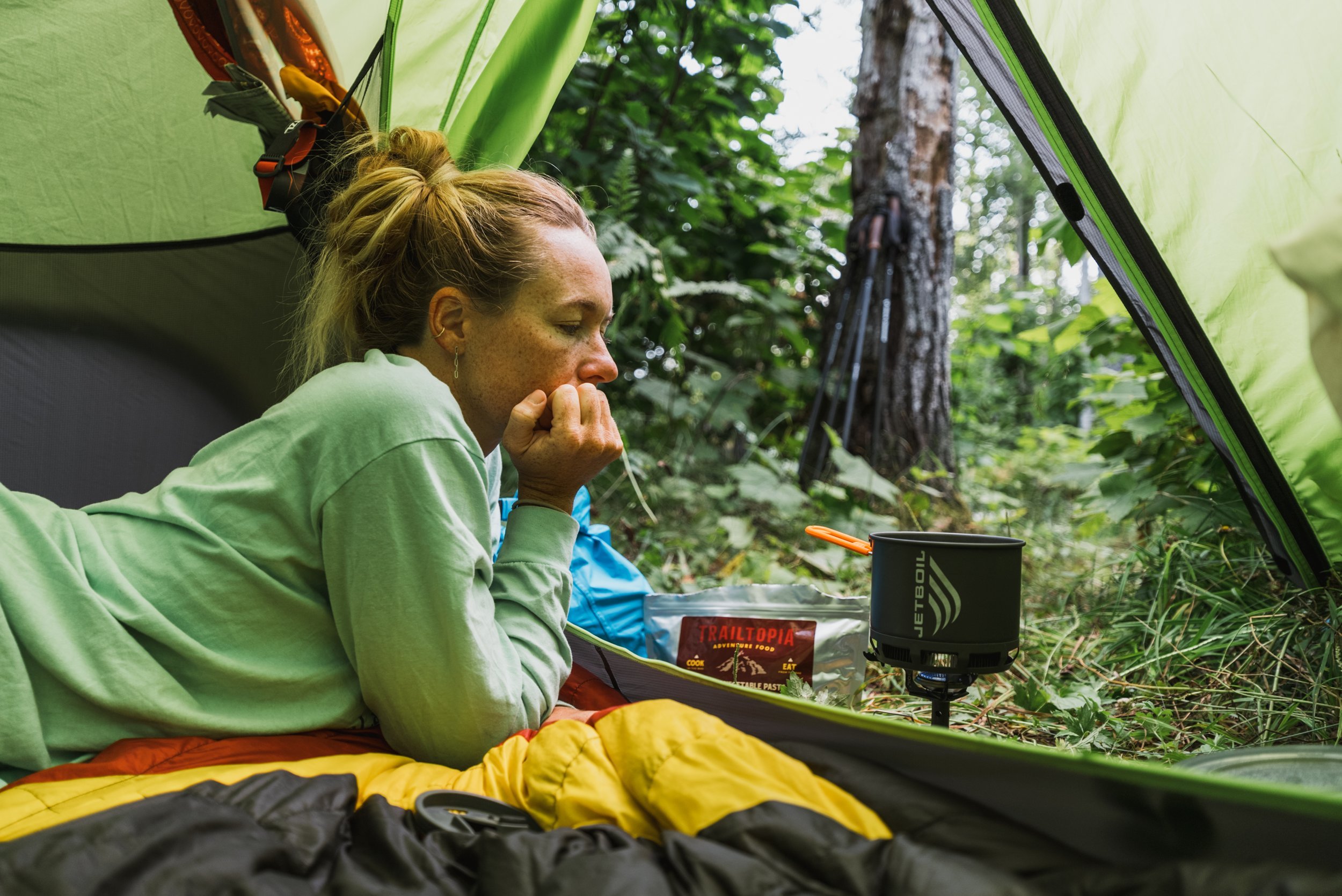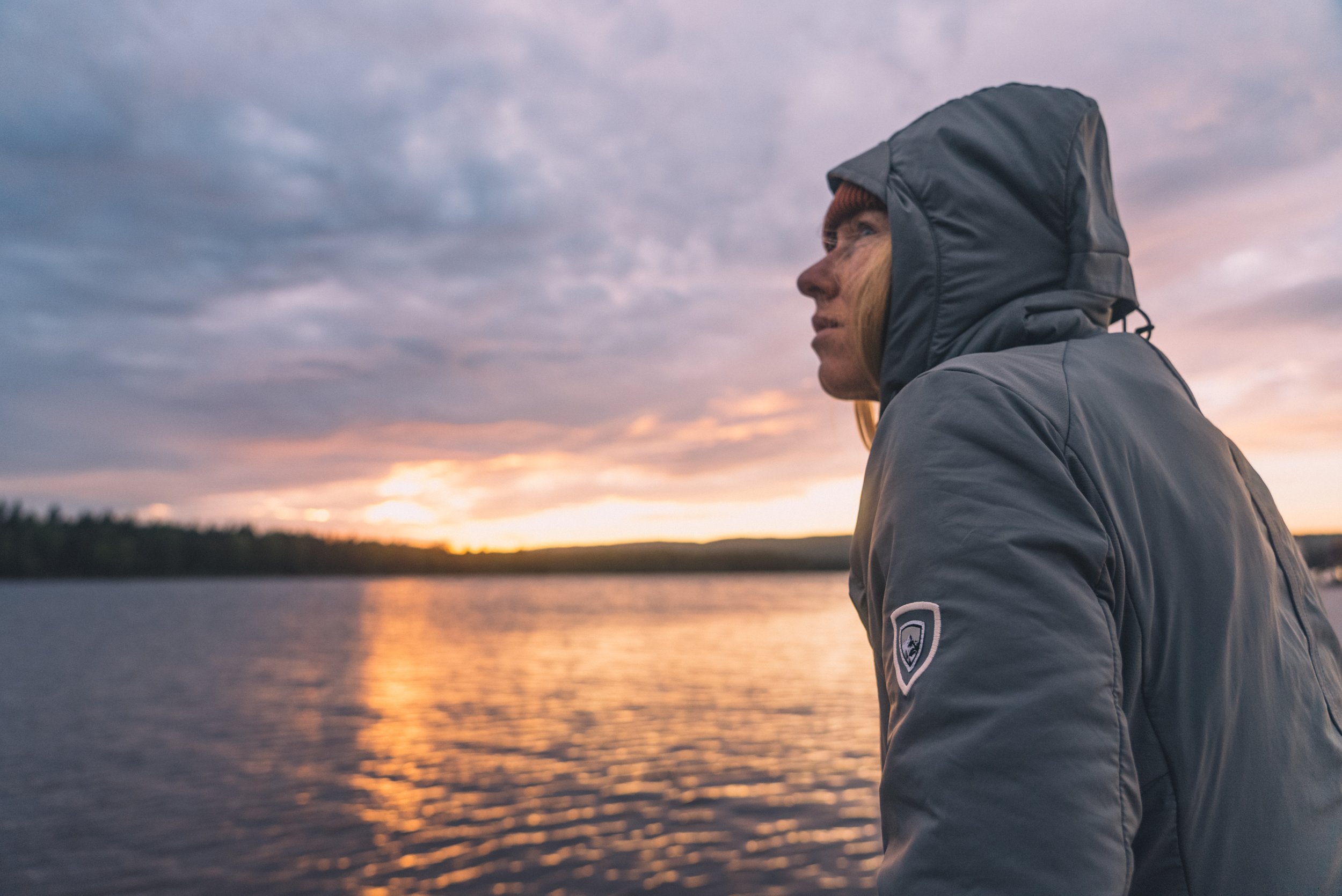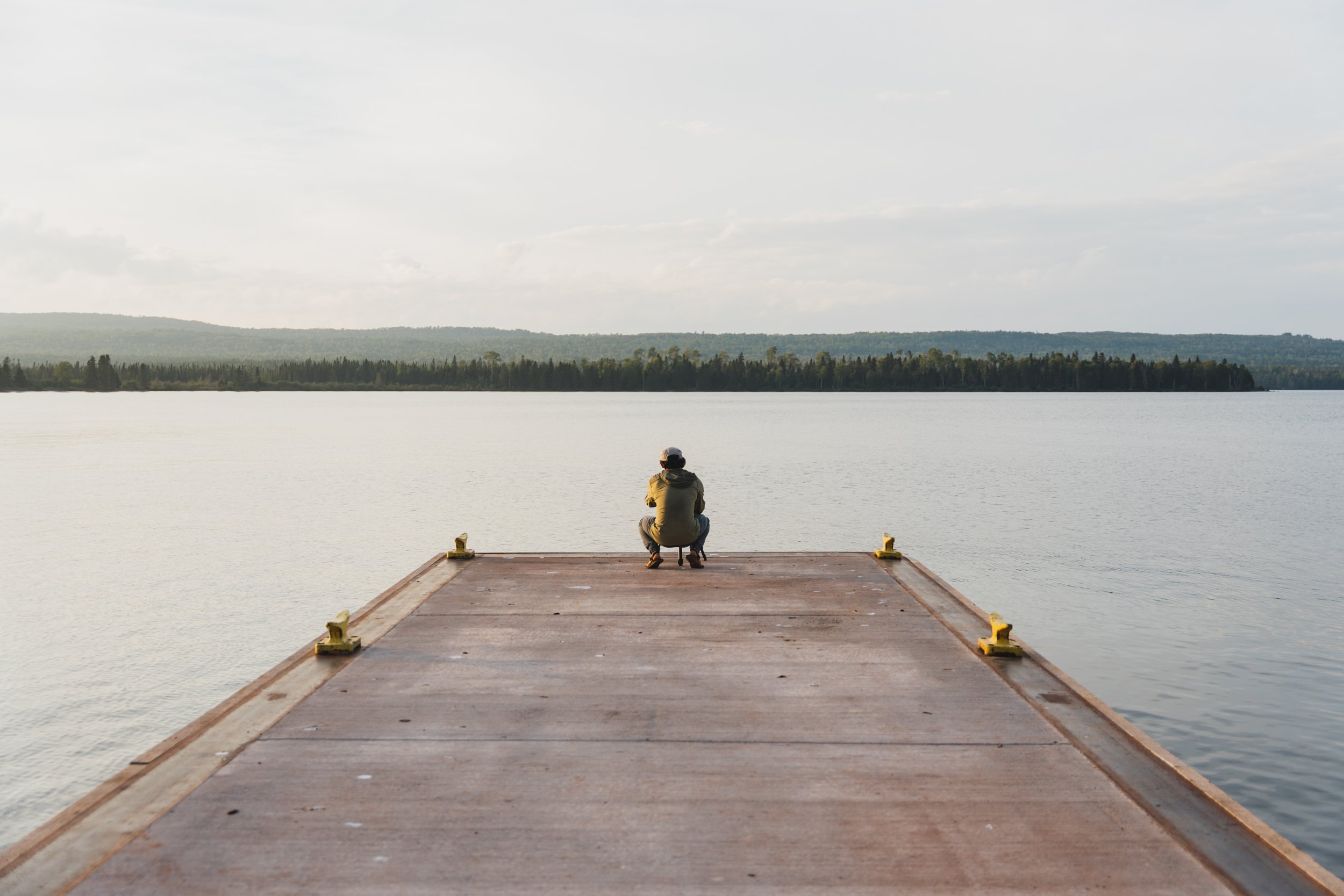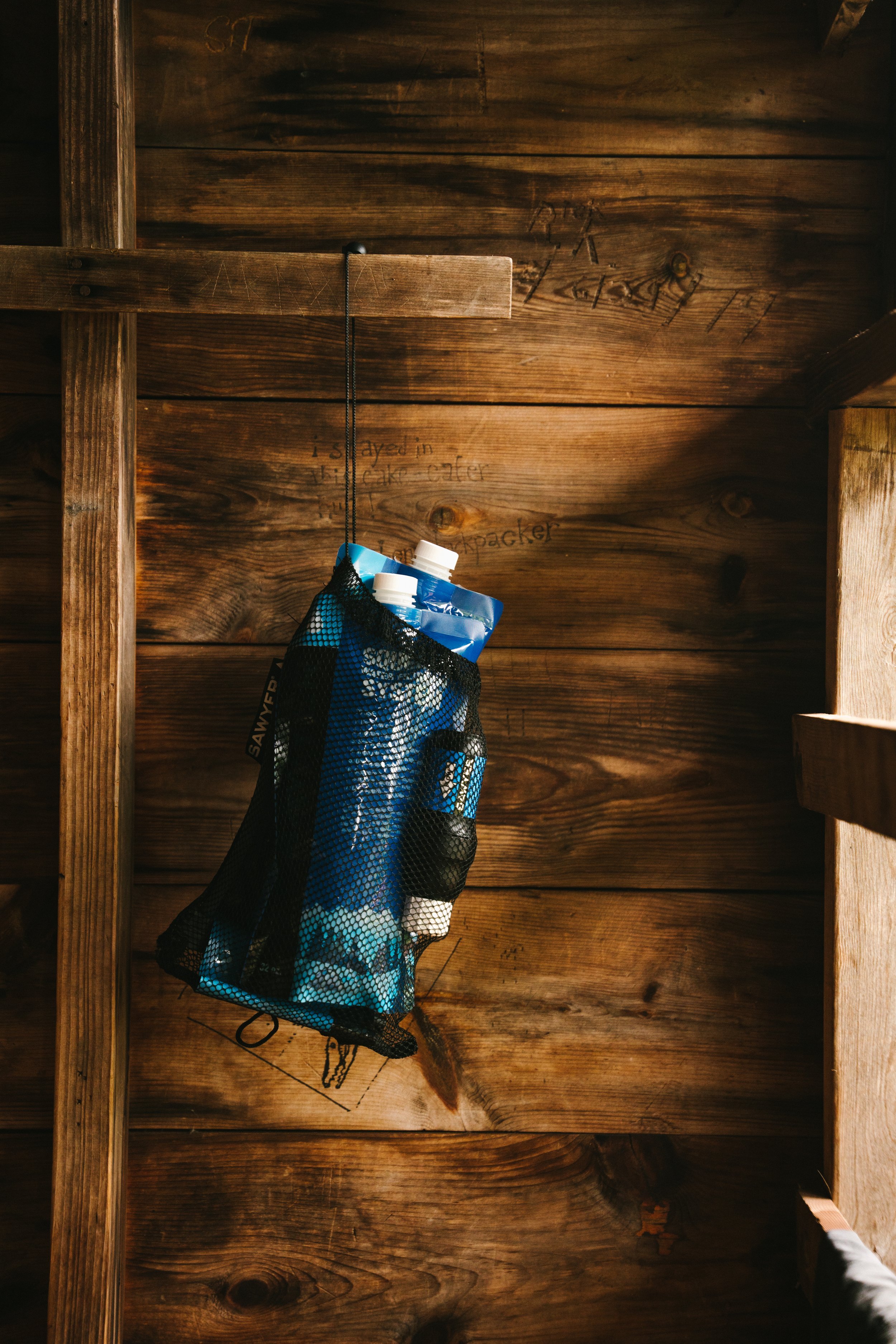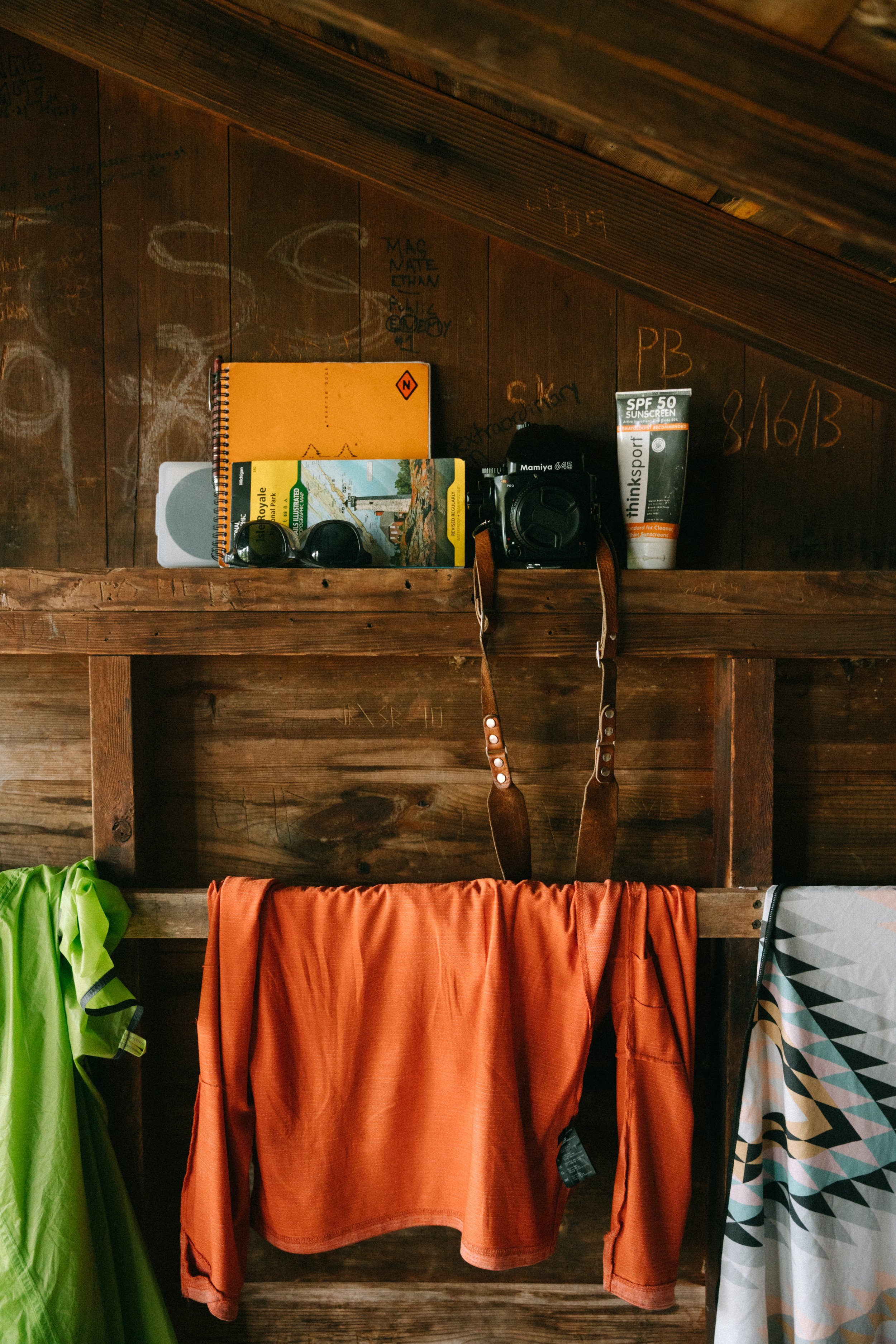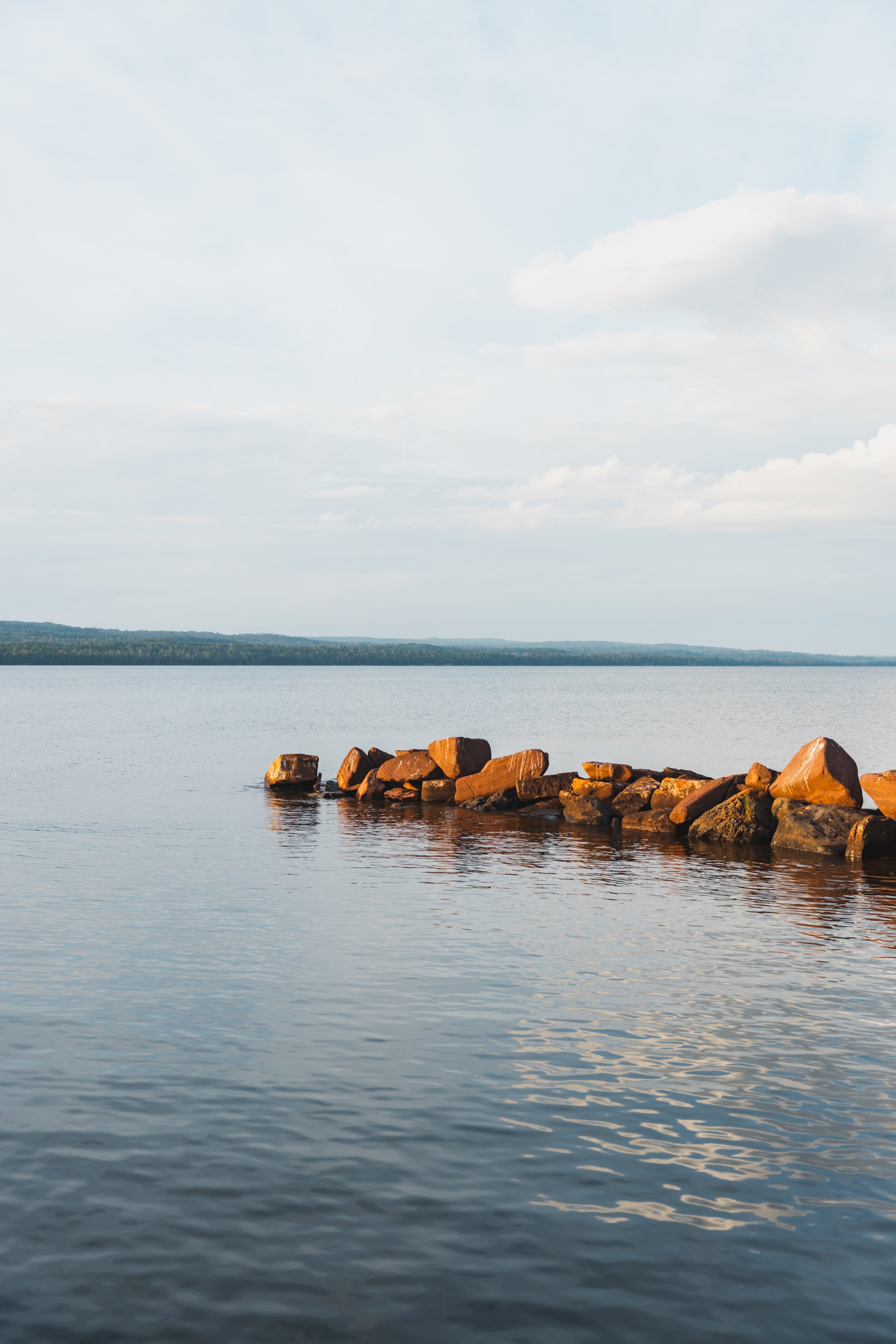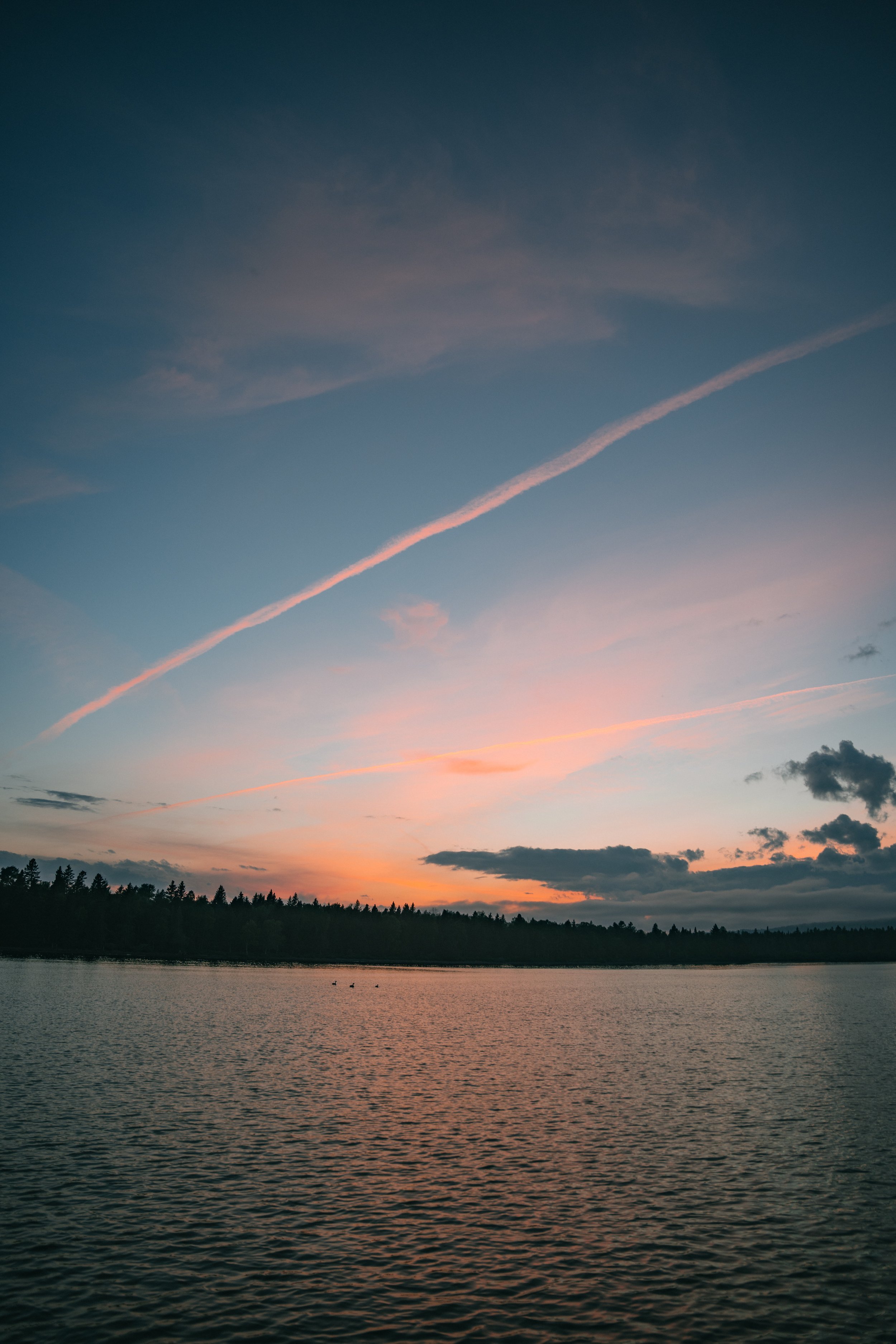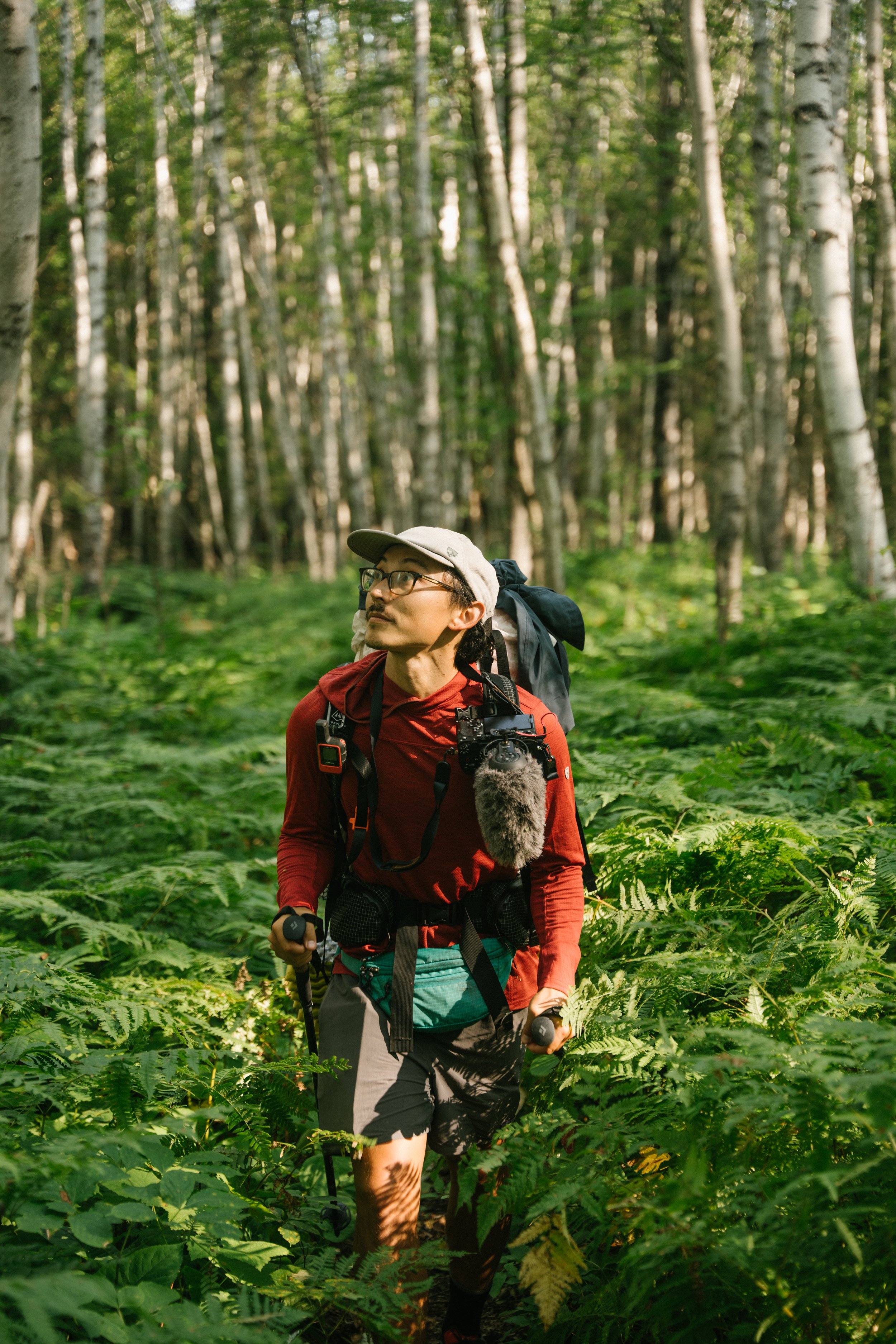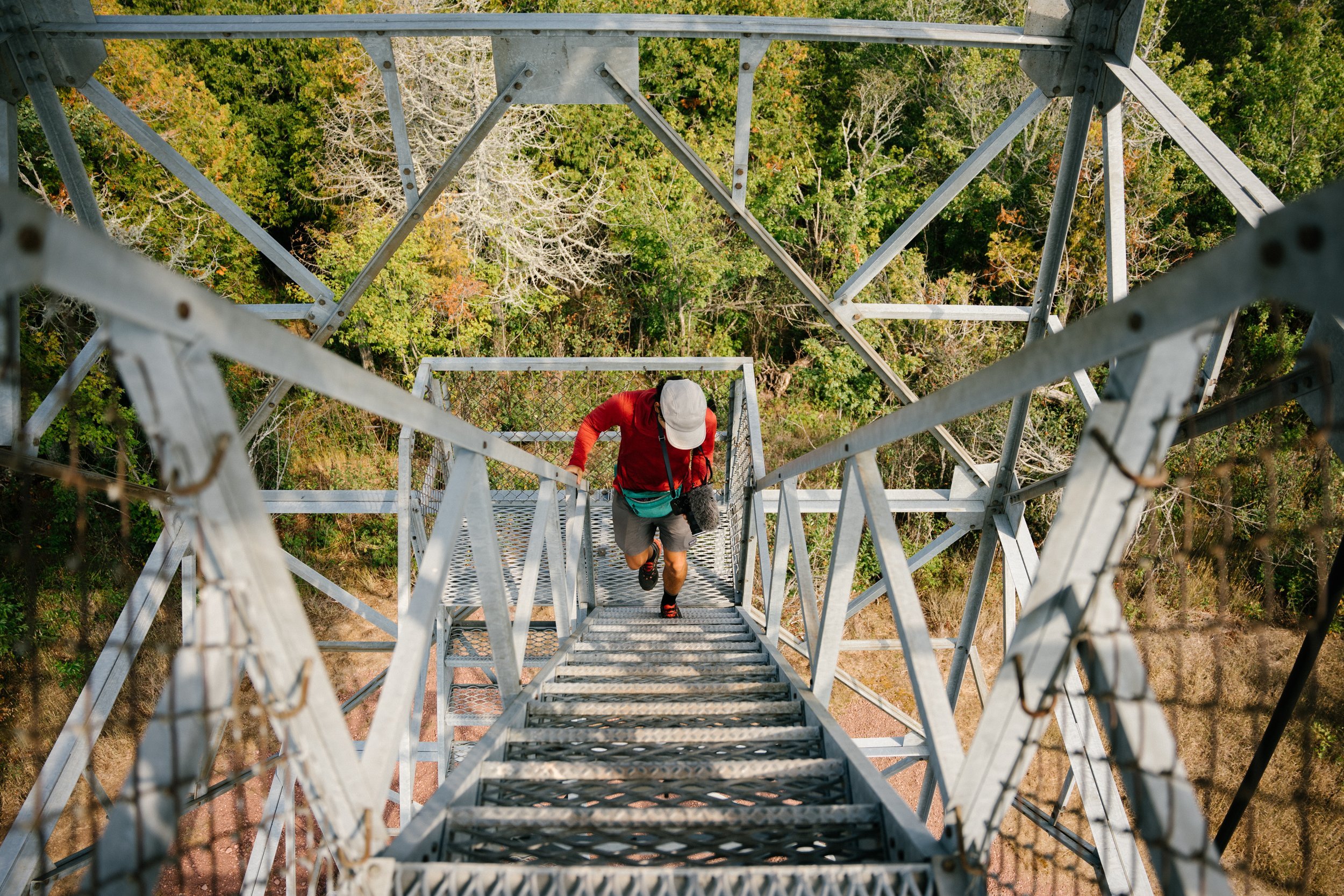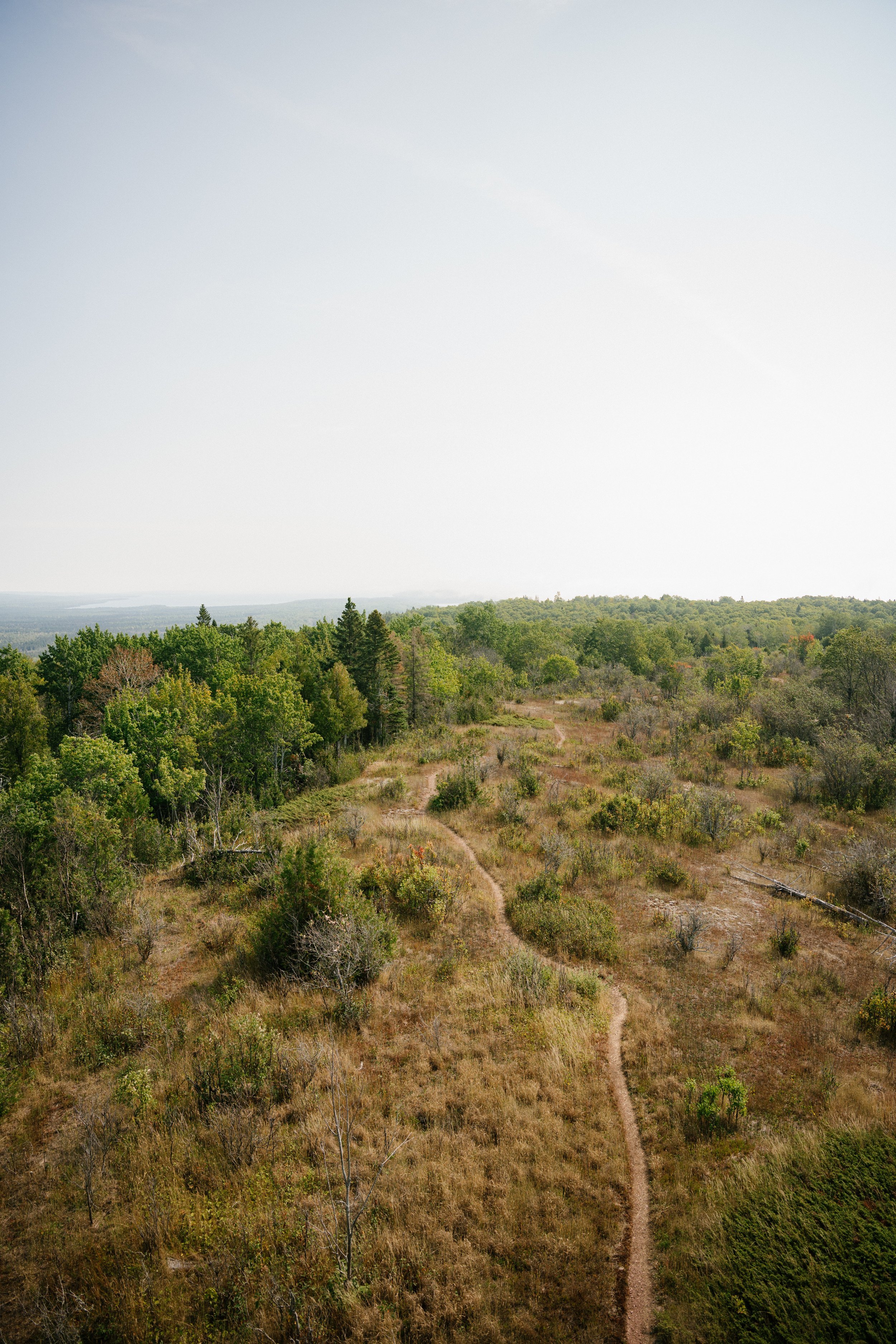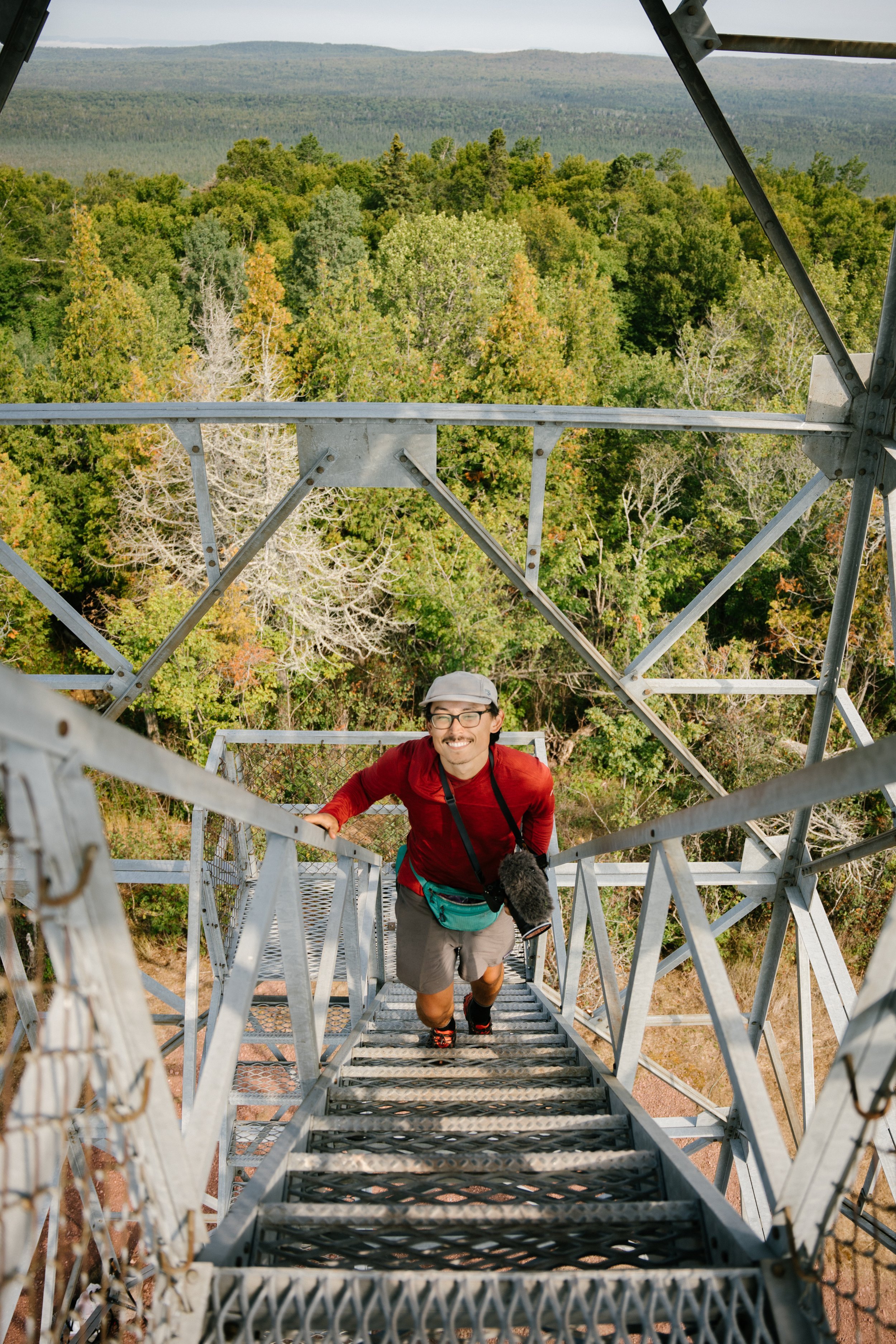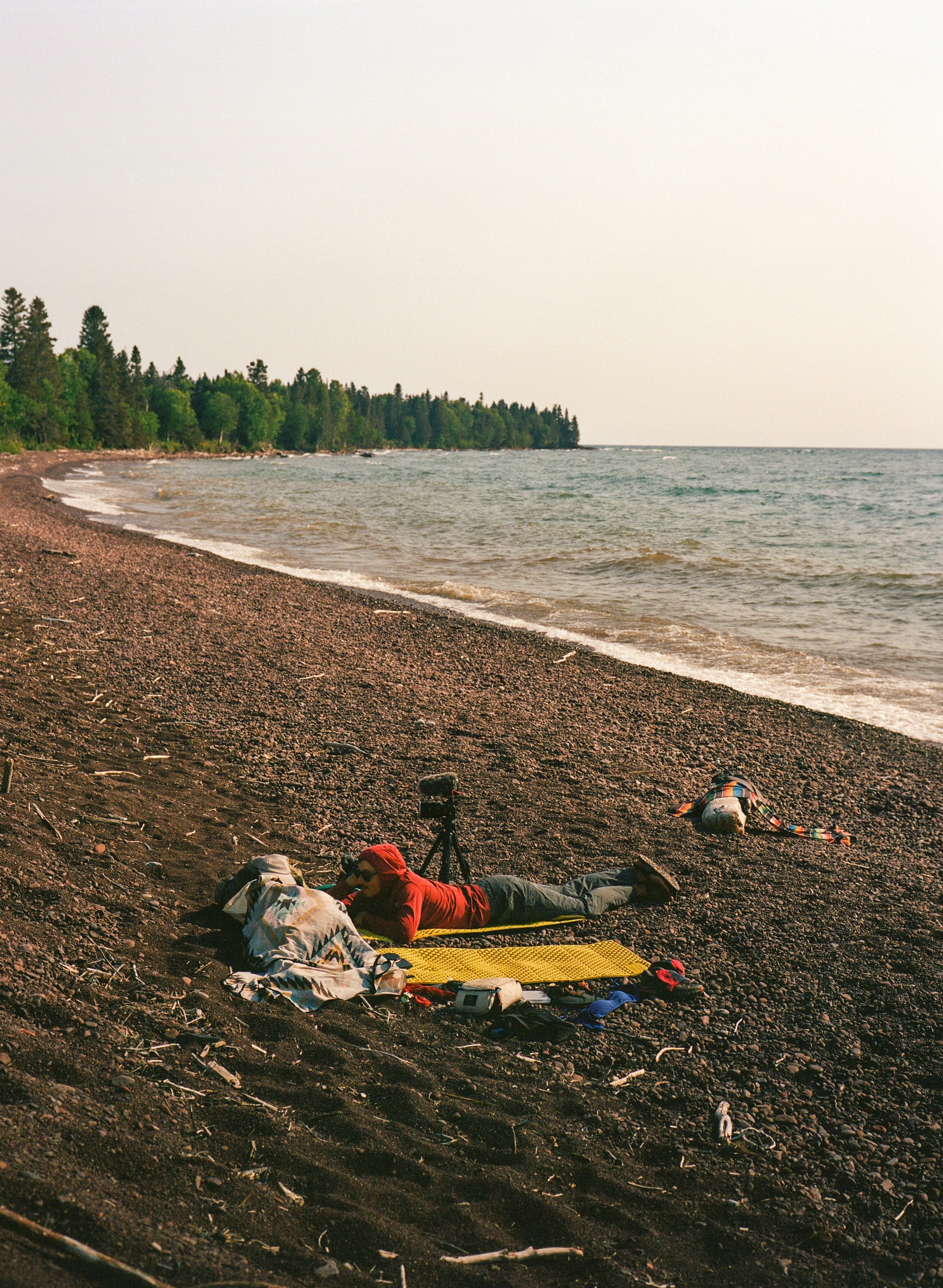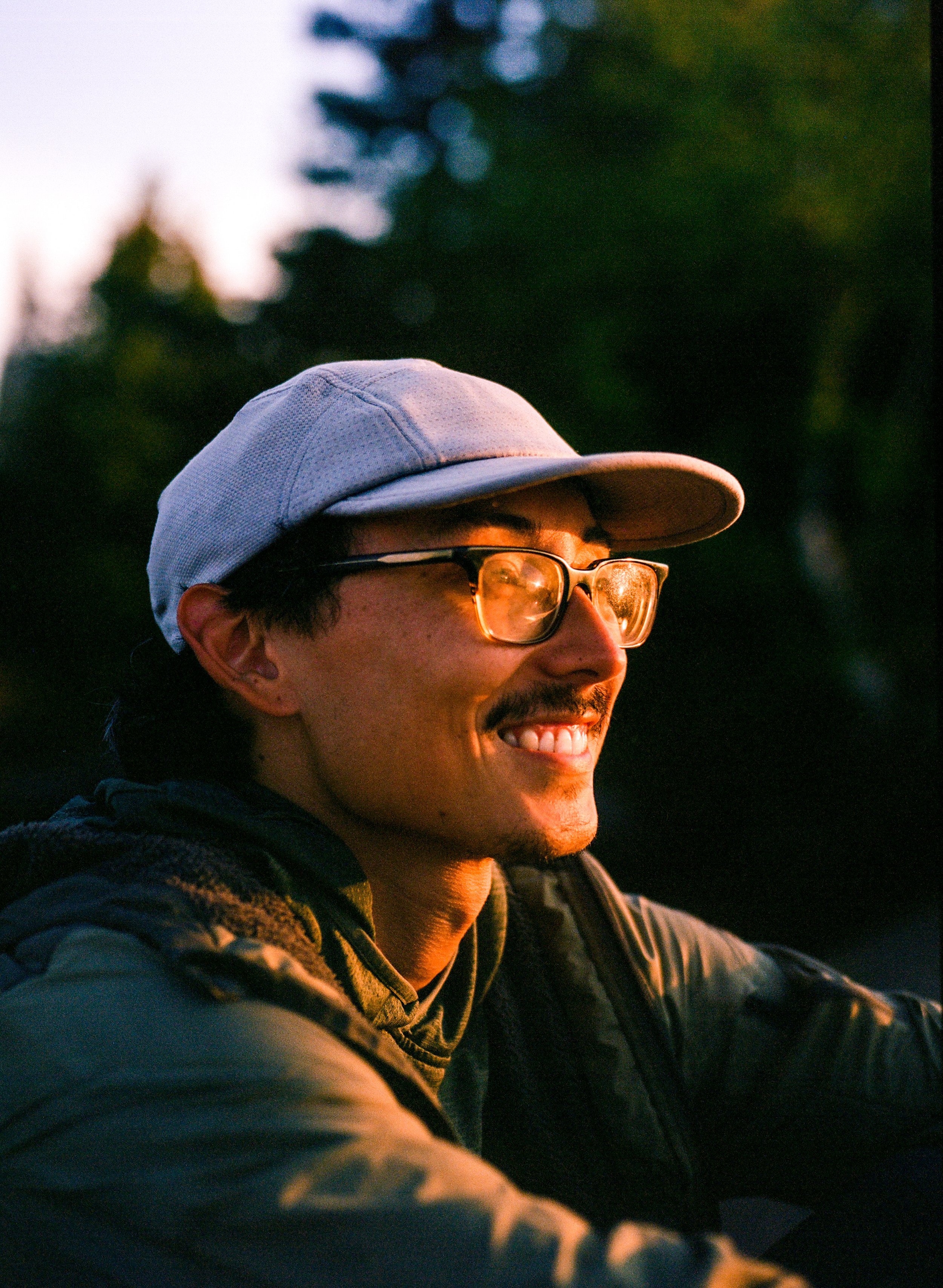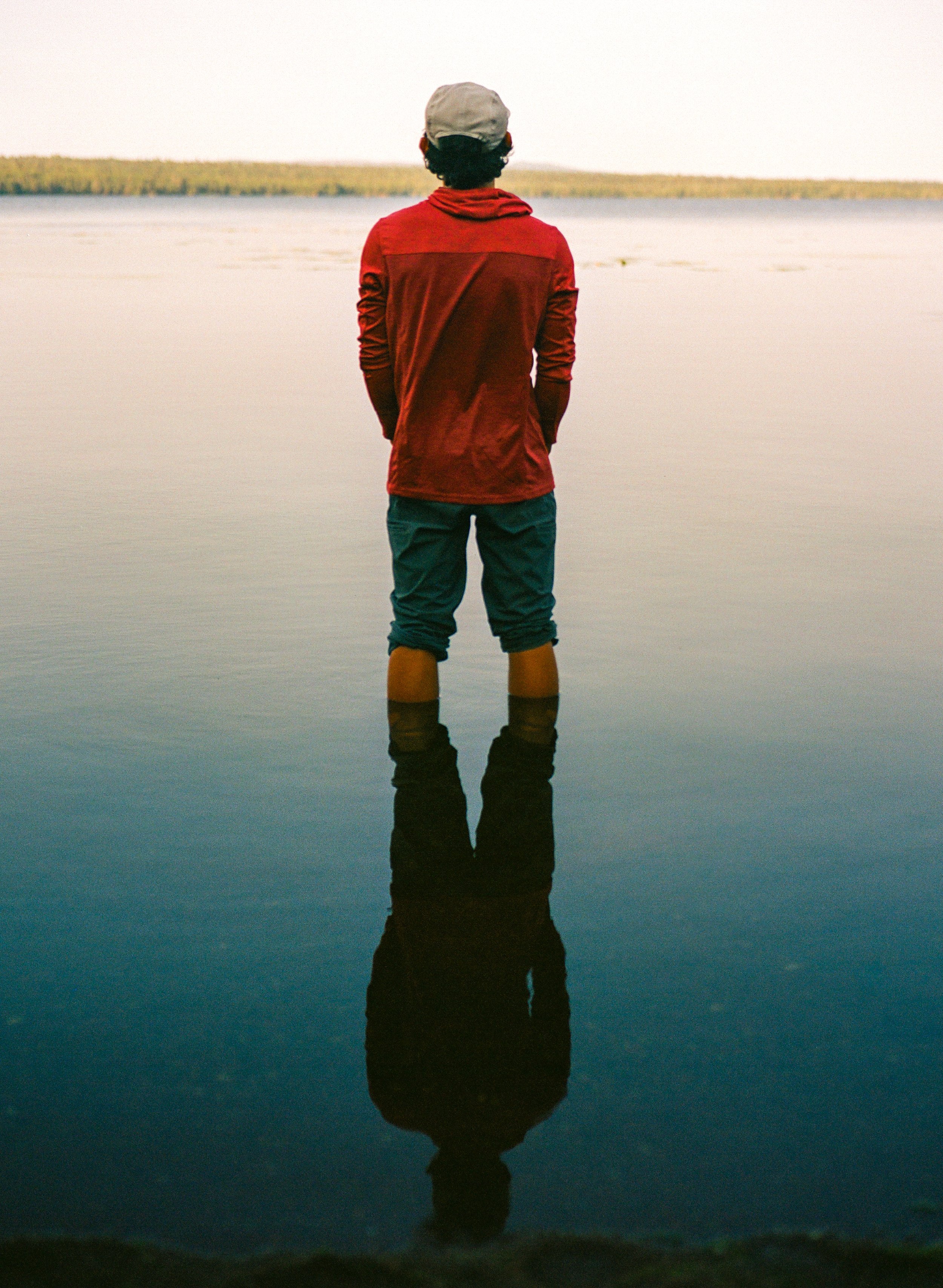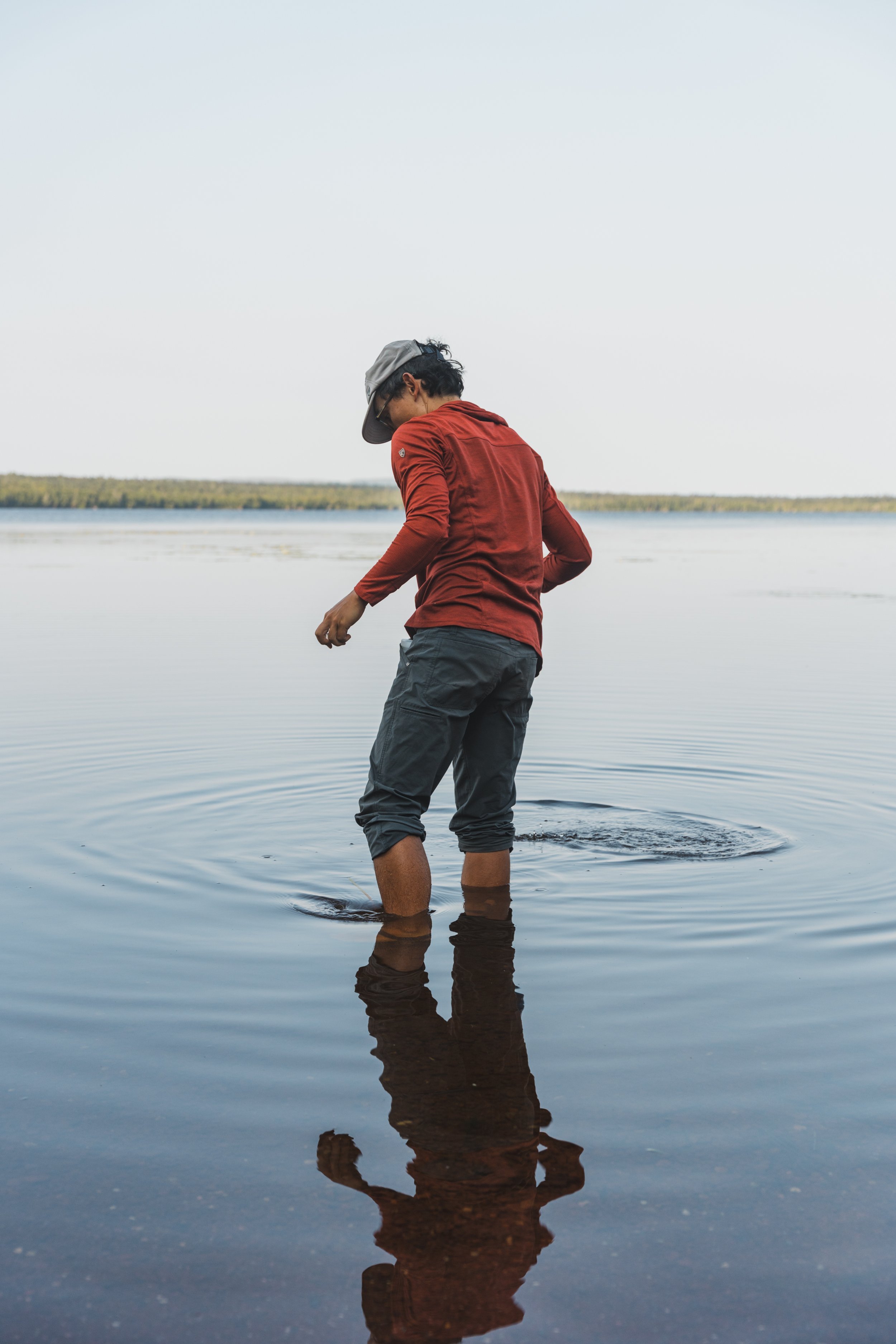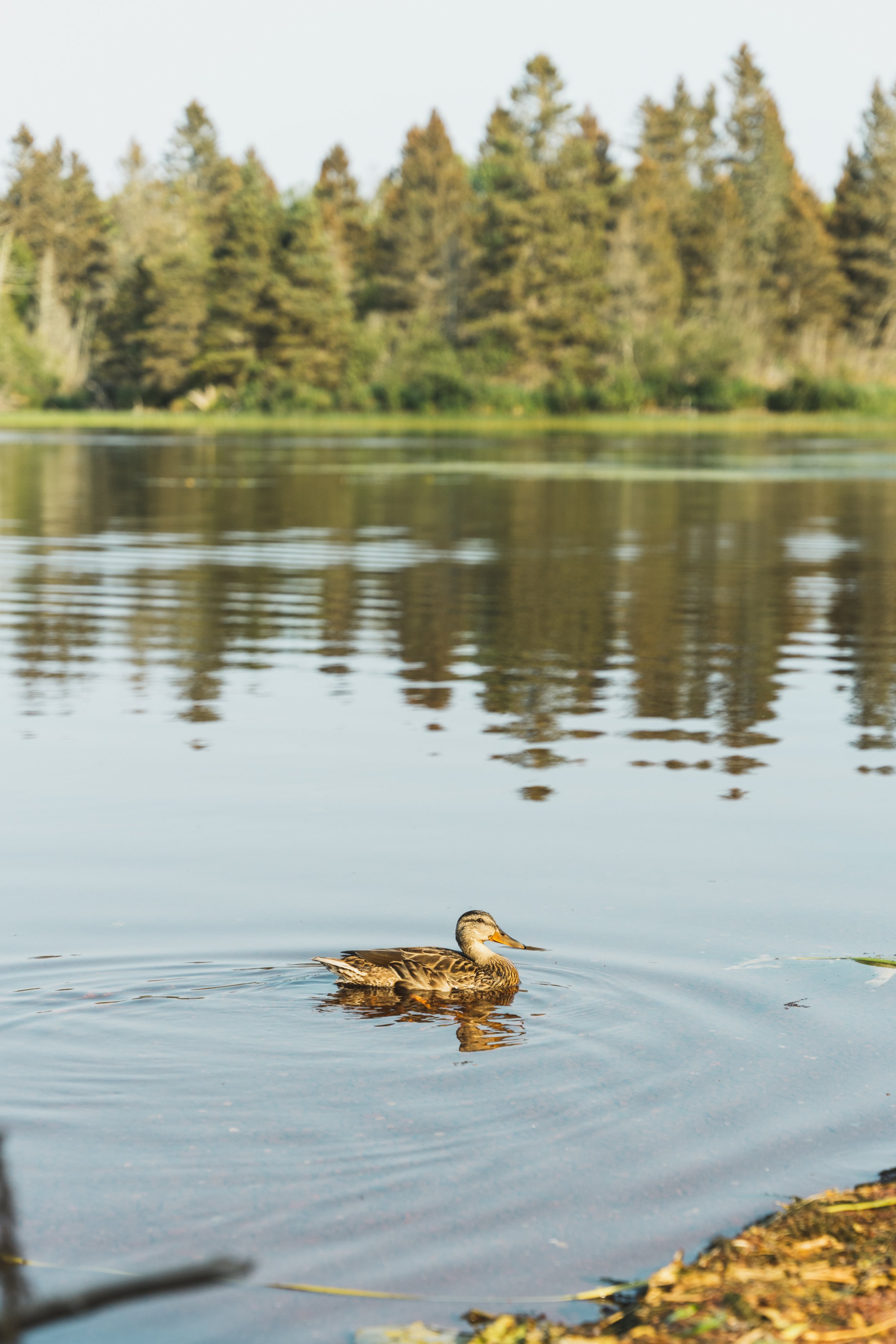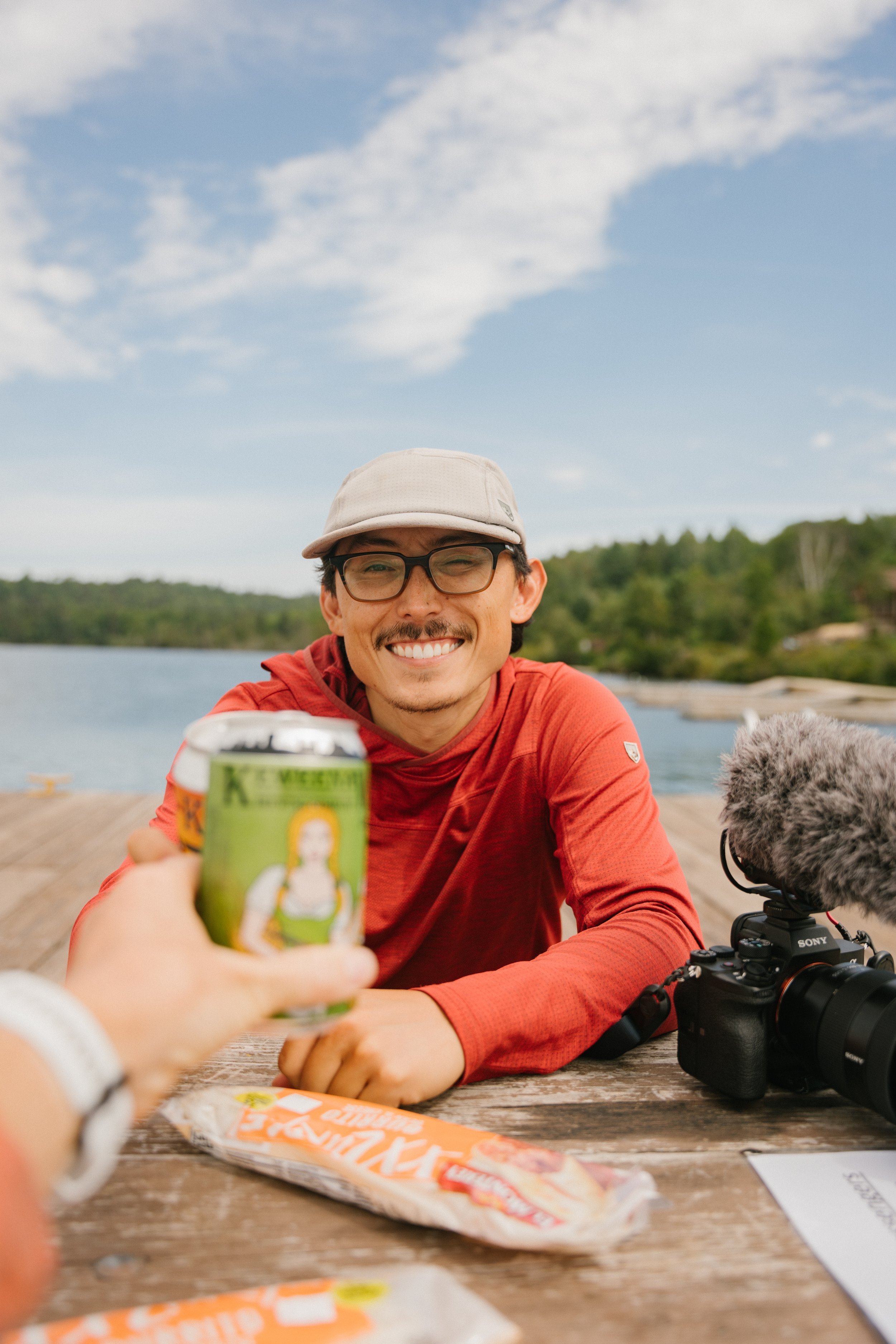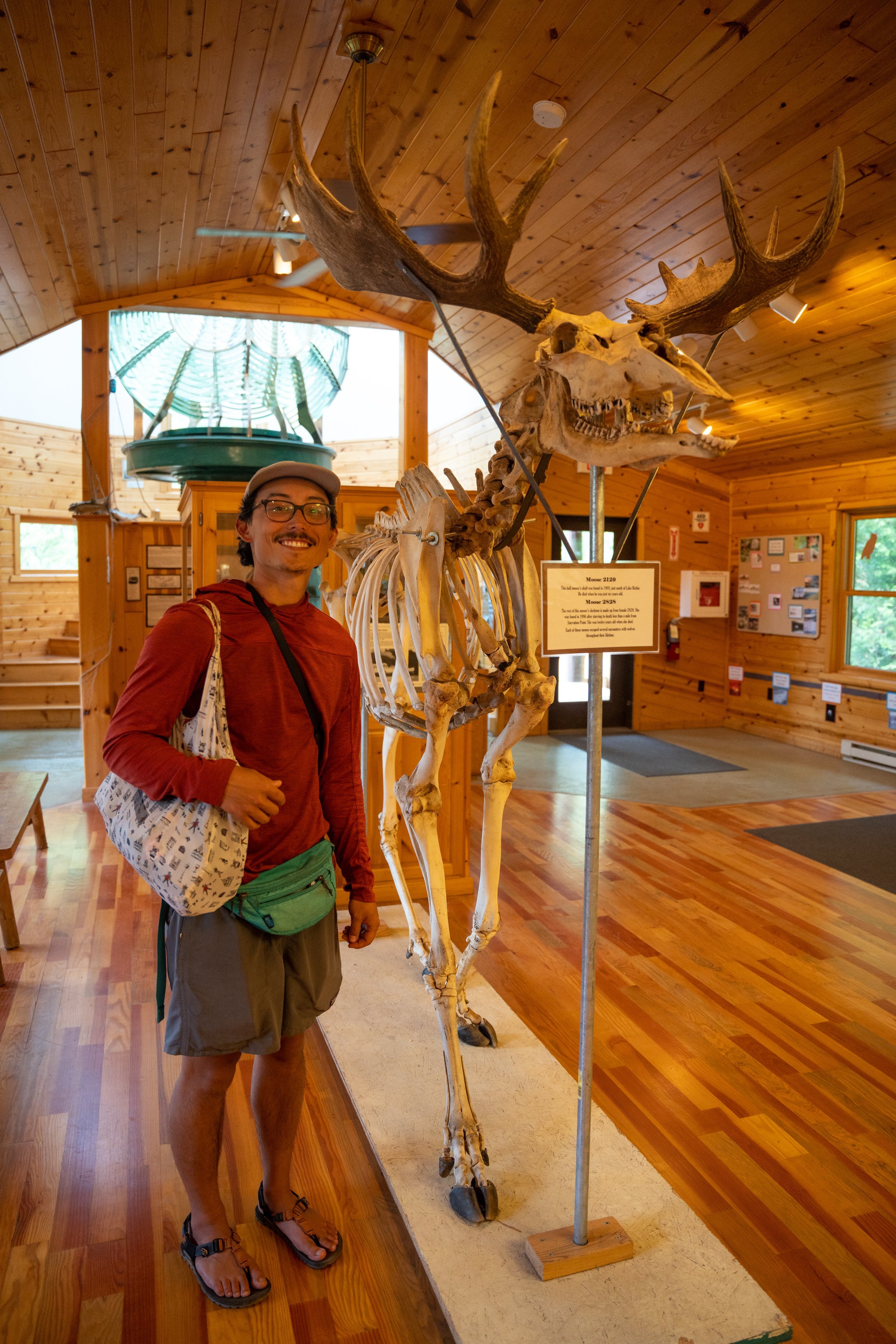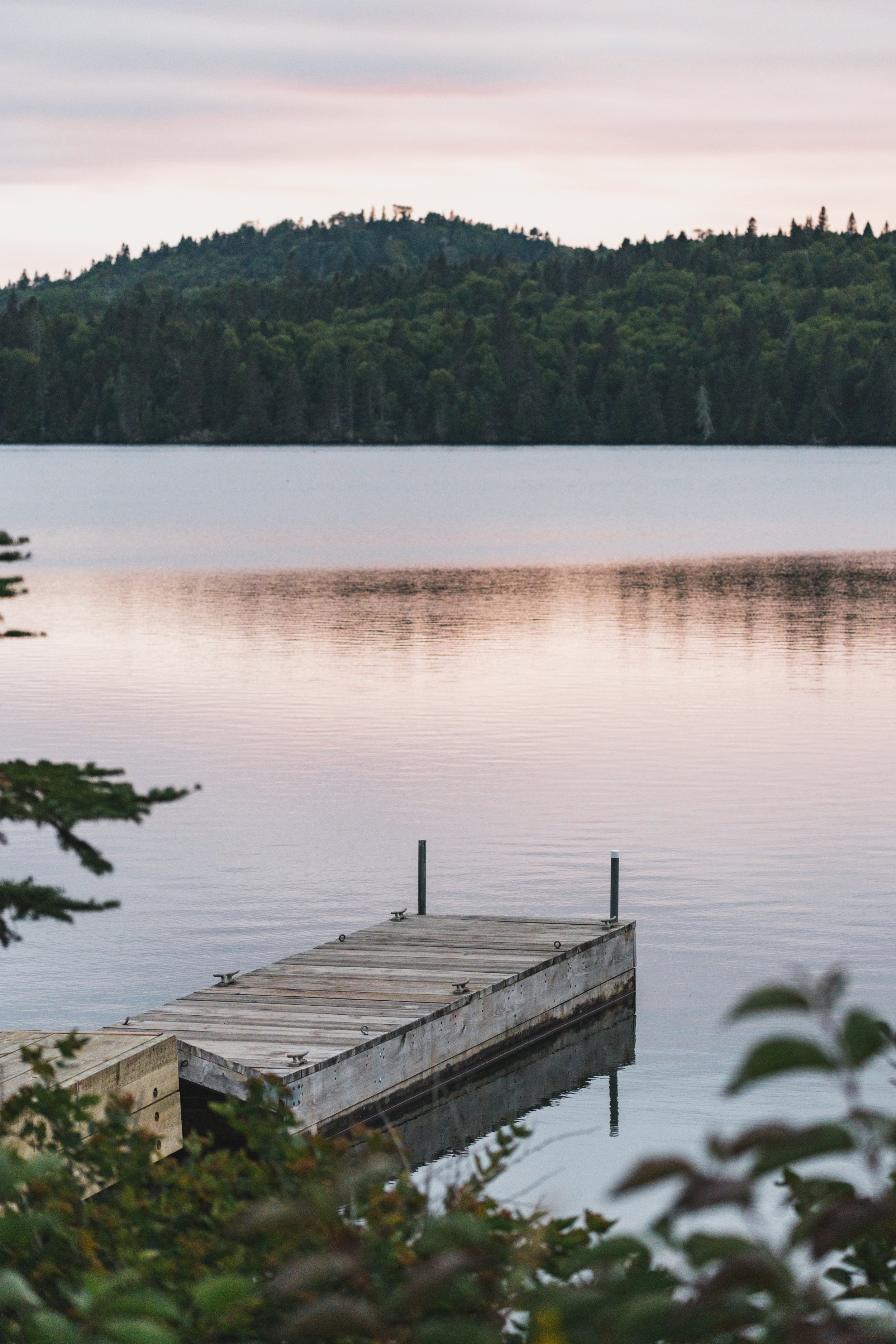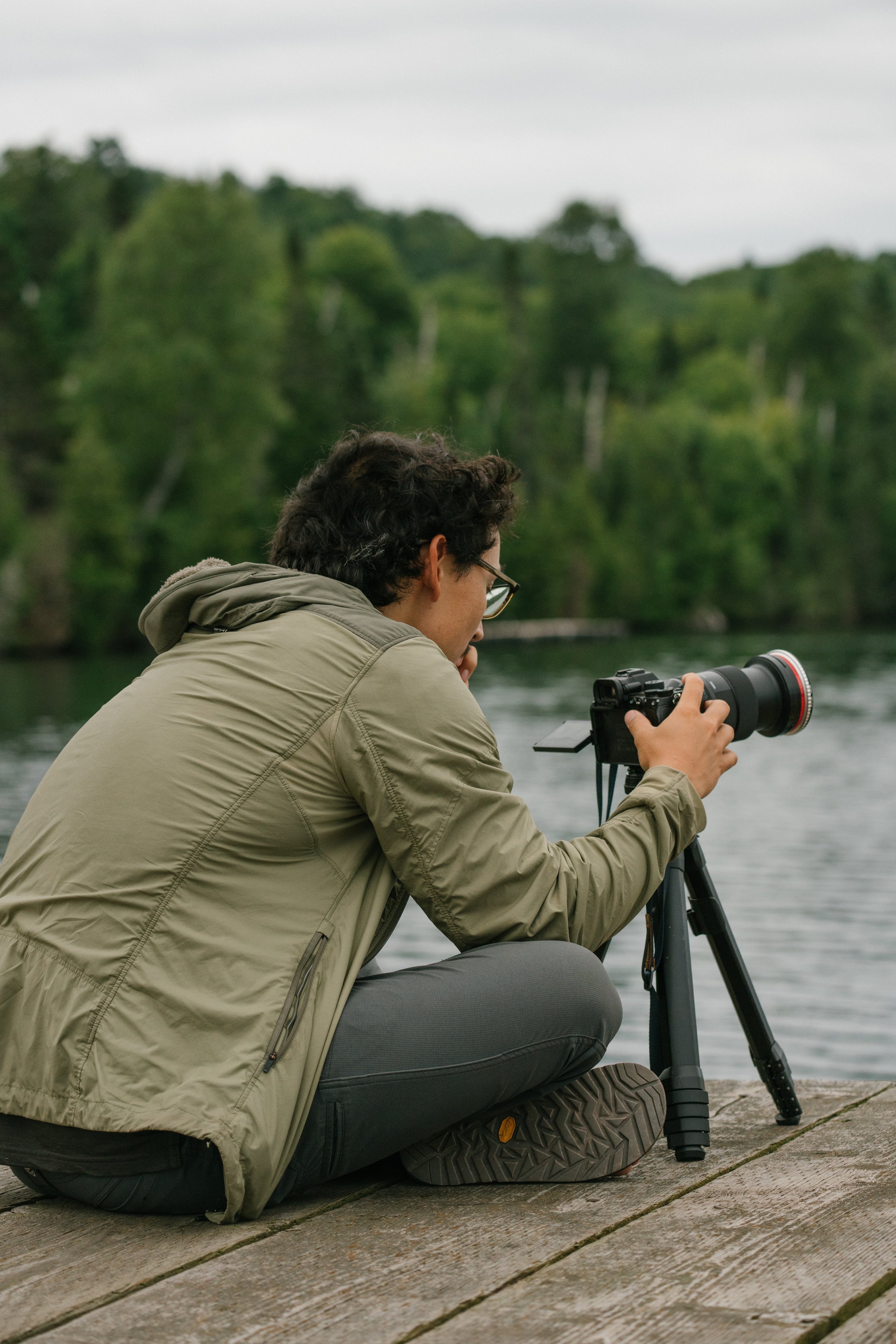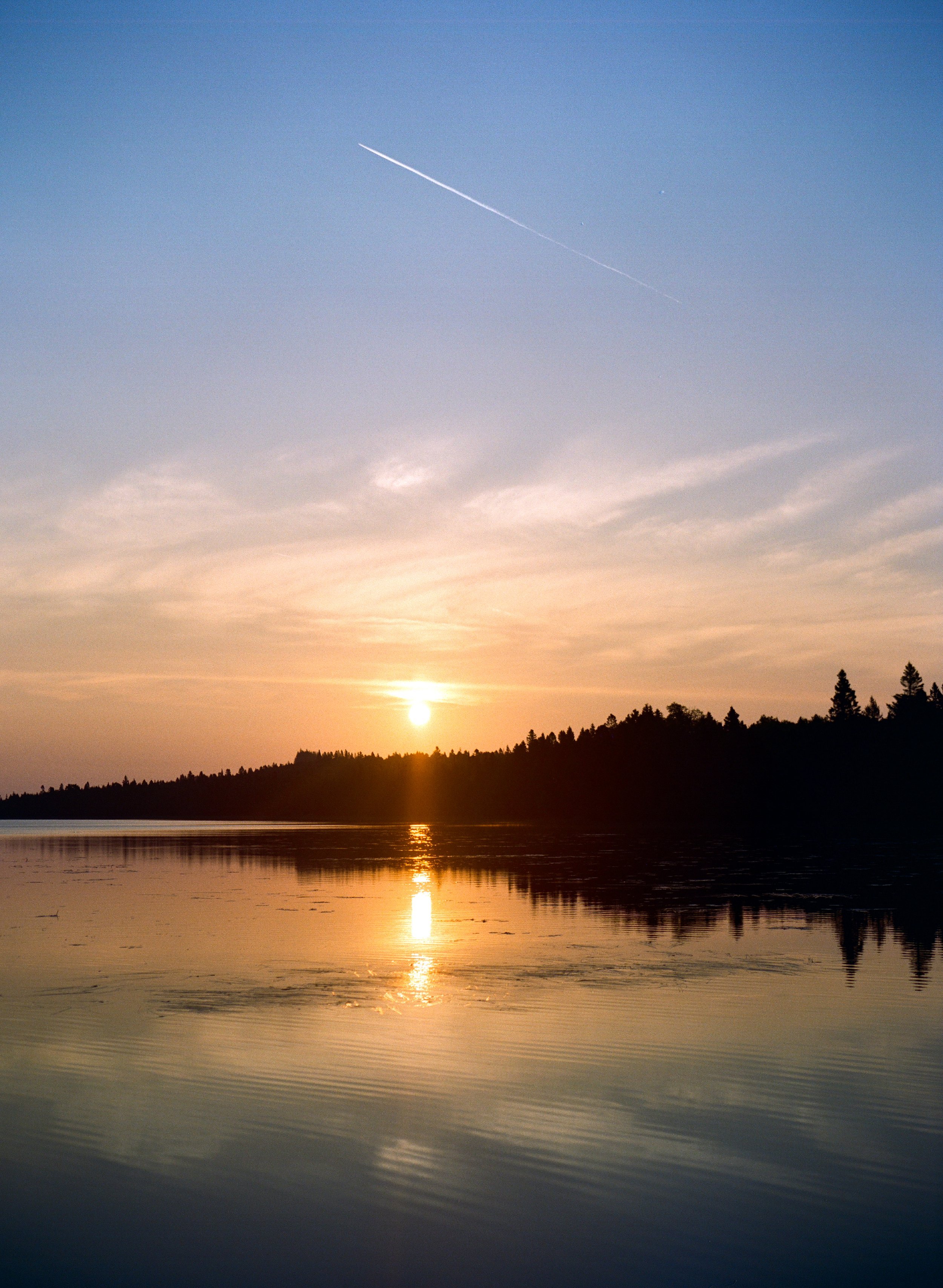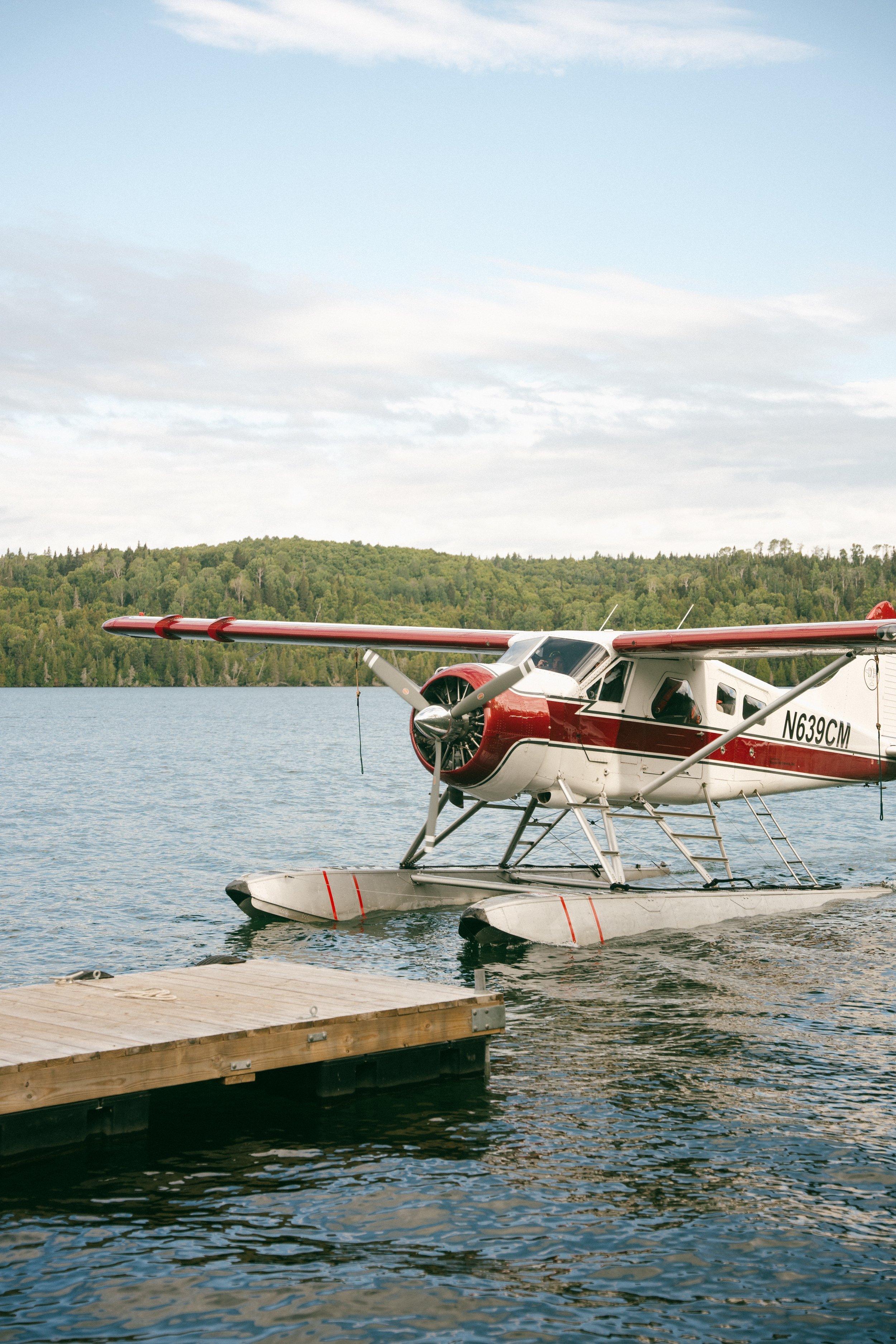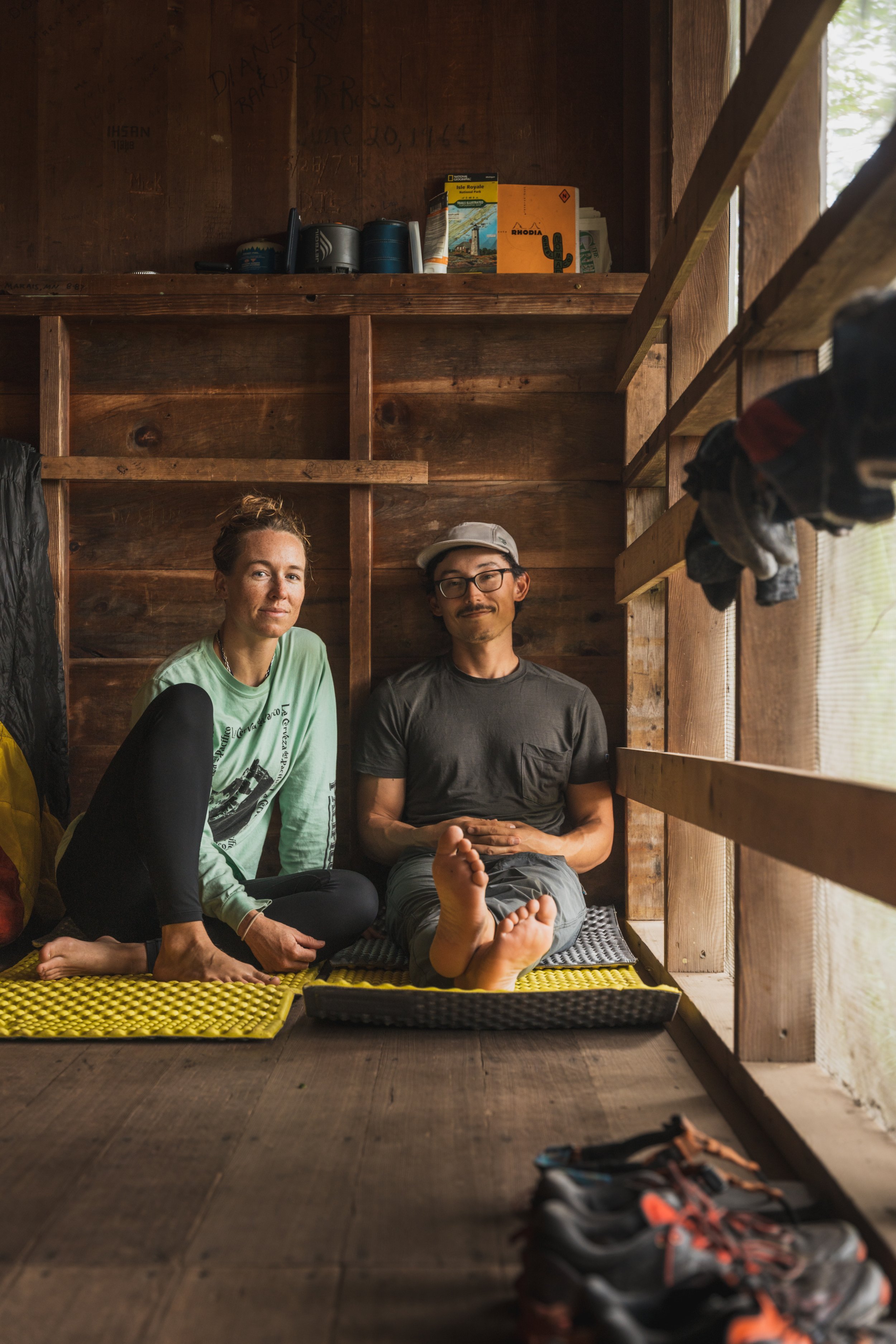Isle Royale National Park | Series Finale | BTS
How in the world are we already at the finale?! Enjoy the episode and we will see you back here for the rest of the BTS post!
In this episode I briefly touch on the idea that we set up this entire summer just so we could justify a trip to Isle Royale… and that was not an exaggeration. This entire series was just so we could finally visit Isle Royale National Park. For as long as Owen and I have been traveling together, we’ve had our sights set on going to (what used to be) the least visited National Park in the lower 48!
The view flying into Isle Royale National Park
Before we get into the trip to Isle Royale, I want to chat about the camping in the UP.
As I’m sure you’ve come to see, we’re not give a man a fish type of people. Instead we prefer to “teach a man to fish” to help you all get out there and have the skill set you need to find your own way into the wild. The same goes for camping.
Over the years we’ve seen places that are called out on the internet get over used, trashed, and sadly what is becoming very common is that these places are getting shut down. The reason why we don’t call out spots in particular is that we want to be sure that they are used and treated with respect so they will remain open for people to use as they travel. That being said, the camping in the UP was the most challenging to find of all the places we traveled to for this series. But I promise, they are out there. So here is a little insight into how we found them:
As always for this type of camping, and looking for camping in areas with sparse areas of public land, we used OnX Offroad.
We found the best way to find camping was to look at the OnX satellite imagery for green space (as seen in the image on the right above). Once we found green space, we would zoom into the map and look for promising clearings, pullouts, or dead ends to camp for the night such as the image above on the left. If we found something that looked good, we would drop a point and look for backup options… Just in case! When we arrived in the area we’d always start with the option we felt was the most promising and go from there. All the while leaving notes about what we found for later reference.
If you care to read more on this subject matter, here is a blog post that I wrote a few months back about camping during our time in the Northern Midwest:
To summarize the camping we had for the vast majority of this series, it often wasn’t glamorous, but it served its purpose. We also spent $0 on camping this summer outside of our national park backcountry camping, and in our book, thats a win!
The float plane that would be taking us to Isle Royale National Park
Alright! Let’s go to Isle Royale!
Getting to Isle Royale takes some creative transportation because it is about 50 miles out into Lake Superior. There are a few ways you can get to Isle Royale National Park, so here are your two options are:
A ferry
A Sea Plane
The Ferry: Ultimately, we decided against the ferry due to time. The ferry, depending on where you leave from can take a lot longer to get to the island. Then, once on Isle Royale your trip often requires a multi hour shuttling from one end of the island to the other before you begin your journey back to Michigan or Wisconsin. Because we were short on time for this trip, we decided to prioritize time efficiency over the literal slow boat.
Sea Plane: The sea plane that we chose for our trip left from Houghton, MI. It was fast, efficient, and negligibly more than the ferry from a cost perspective. We also loved that we got the chance to see the island by air when we flew in and out of the park. Isle Royale has some 400 little islands and seeing them by air gave us a way to appreciate them from the air before spending a week hiking in the woods.
In the end, I think either choice is a great option depending on how much time you have. In total we spent $360 per person for our round trip flights out of Houghton to Rock Harbor on the island. Then back from Windigo to Houghton again.
Owen enjoying lunch during the first day on trail
It seems that we were on Isle Royale at a unique time last summer. There were wild fires on the eastern end of the island which shut down a large portion of the most popular trail (Greenstone Ridge). There were multiple dangerous algae blooms in the lakes that people used for drinking water, and the park was seeing record numbers of visitors. The last issue, is something that Owen and I are seeing in most National Park sites that we visit over the last few years. It’s greatly a product of people discovering a love for the outdoors in this post-covid world, which is something that makes us very happy to see.
However, the flip side of that means that different wild spaces, particularly the Instagram worthy National Parks are being over crowded while being understaffed and in Isle Royale’s case, they don’t have enough accommodations for those who are showing up to see the park. Something that we didn’t realize until planning our trip, Isle Royale doesn’t limit the number of people that come to the island which caused for the challenges we encountered during our trip.
A still morning from our the dock at our campground
Based on conversations with park rangers and the extensive write up they handed out to all that arrived, it sounds like it is a problem they are actively working on. Historically, Isle Royale was the least visited National Park in the lower 48, which means that the number of visitors has never been an issue for them. Now, Isle Royale is beat out by North Cascades National Park in Washington according to CNN.
Even though we had our challenges both physical and mental in Isle Royale, ultimately we had a great time. I think it just took us a while to pivot away from what we envisioned this experience was going to be, to instead focus on what it was. I am thankful that we got our minds right while we were still on the island so we didn’t miss out on what was right in front of us.
MAK watching the world go by in the shelter
Something that is cool about hiking on the island, and that we’ve never come across in our National Park hiking career is the camp shelters. Not all camp site areas have shelters. If they do, they’re typically just a few of them and all are offered first come first serve. At first we were like: “why do they have such fancy camping?!” Then when the bad weather set in we quickly understood their purpose.
Owen and MAK enjoying the day off from hiking
Isle Royale, of which sits in the middle of Lake Superior, is know to have finicky weather no matter the season. The shelters provide campers, who are lucky enough to get a shelter, a dry place to sleep no matter the weather. Because of the surge in visitation, we didn’t think there was a snowball’s chance in hell that we’d get a shelter to ourselves.
Everything needed to be dried out after arriving due to the heavy rain on trail
Dinner on trail, simple, yet effective
Our perseverance paid off with our first shelter after our double hike day. We covered some 18+ miles in the rain in hopes of getting on the following day, but lucked out with one for both nights we were in Siskiwit Bay! It was the morale boost we needed, and it gave us the chance to dry out, mentally refocus, and rest our weary bones for the rest of our treck.
A little still life of all of our worldly possessions during our zero day
If I were to do Isle Royale again, I would do it by boat in some shape or form. A canoe, a motor boat, a sea kayak, something of that sort! Reason being that now that the park is starting to see an influx of visitors, camping is only going to get more challenging for hikers. However, Isle Royale has an extensive list of camping areas (including shelters!) that are only accessible by water. I think it would be an incredible way to spend your time exploring the island and to get a true “remote” feel that we felt was missing from the experience.
We came to Isle Royale hoping to see the wolves and moose that the island is famous for. The extent of the wildlife we saw was squirrels and a few ducks. Obviously, we were bummed but also well aware of the fact that wolf sightings are incredibly rare. But it doesn’t mean we can’t hope right?!
I think the biggest takeaway from our time on Isle Royale was less about the grand views and miles crushed and more about a realization that we are always trying to one up ourselves…
Last year, we made an epic of a series (15 episodes, I still don’t know how we survived editing that series alone) in Alaska, with a deeply emotional plot line. This year, we were in the Northern Midwest and wanted to prove that you don’t have to look that far away to find an epic adventure. So we planned a series that would take us to some of our last standing, lower 48 bucket list destinations. I wanted to out-do what we had done in that series. I wanted to write something stronger than I had before even though the emotional charge wasn’t present for this journey.
Our last sunset on trail
And we arrived at our final destination, only to feel like we were being beat down at every turn. On that long hike day I can’t tell you how long I dwelled on the thought: “How the hell am I going to make this look interesting?!” as hot tears of frustration silently rolled down my cheeks, as I marched ever onward behind Owen.
We made it to Windigo! It was cool to see all the moose antlers on the island.
After a whole lot of thinking, and a whole lot of walking in silence I realized that I was choosing to have a bad time. Comparison is a thief of joy and so is the inability to see the good in a situation. After arriving at our shelter, Owen and I talked it over extensively. I was relieved to hear that I wasn’t the only one who was struggling during our last leg of this summer adventure. Together, we came to terms with Isle Royale not being what we envisioned it would be and instead made a decision to quite literally choose to look at the bright side.
The shift in our experience was immediate. When it came time to sit down and write the series, I knew that I wanted our experience on Isle Royale to be the moral of the entire series. That is always the challenge of what we are doing, to tell a strong, yet truthful story of our time exploring. This series, more than any, has helped me realize what our work is trying to accomplish.
We are wanting to tell the story of personal development that inherently comes with travel. Our there, when you set out to experience the world, you are forever changed for the better. These stories are the lessons we have learned and we hope to impart them on all who come in contact with our work while also showing that if you are open to it, these kinds of lessons are out there waiting for whoever is willing to receive them.
Our last picture together on Isle Royale National Park
Thank you all, from the bottom of our hearts for coming along on this journey! It was a joy to experience and then create into something we could share with all of you! We hope you enjoyed it! Please let us know if you have visited any of these places, and if so, which have been your favorite. Bonus points for things that you learned along the way ;)
See you down the road! MAK
Thank you to our sponsors
These brands made it possible for us to document our travels through the Northern Midwest and turn it into this series! Without their support none of this would be possible! We’re forever grateful to have brands we already use and love on our side to help us create something we’re proud of!
Presenting Sponsors
We’ve trusted our Jetboil cooking systems for years. Our favorite, the Flash Cooking system is lightweight, compact and perfect for any trip! If we are cooking on trail, or making coffee with a view… it’s with a Jetboil.
Maps are your best friend when you’re on the road. On X makes it easy to find open routes and trails no matter where we are. On X allows us to access saved maps offline so we can locate ourselves in the wild when there’s no service.
We’ve now been living out of our flat-bed Four Wheel Camper for 3 years. FWC builds comfortable and durable campers that can fit on any truck. We can confidently say that our FWC is the most comfortable and livable rig we’ve had in all our years on the road!
Tires can be some of the best insurance when you are out in remote places. We love and trust our Toyo ATIII’s to get us in and out safely, no matter the terrain. They’re amazing in mud, moon dust, loose rocks, slick rock, you name it!
Power and power management are key to living and working full time from the road. Our mobile lives run on a Redarc Manager 30. It’s a state-of-the-art battery management system that charges and maintains auxiliary batteries by incorporating AC, DC and solar inputs. We’re not sure where we’d be without it!
Supporting Sponsors
Our work life is powered by Battle Born. They make the best lithium batteries on the market and are a crucial part of our power system that enables us to work from the road!
We’ve been in a deep love affair with Bedrock Sandals for nearly as long as we’ve been on the road. They make the best go anywhere, do anything adventure sandals!
Born from our rebellious philosophy to question everything, we feel right at home in KÜHL. Making everything from hiking clothing to casual wear KÜHL has us covered.
Our photo and video gear lives a tough life out on the road. Pelican protects everything from our microphones to our film cameras! They are tough and take the fear out of bringing the equipment we need with us!
Sawyer has been our go-to water filtration system for as long as we’ve been hiking. We love them for their Clean Water For All program that brings clean water to those without all over the world!


